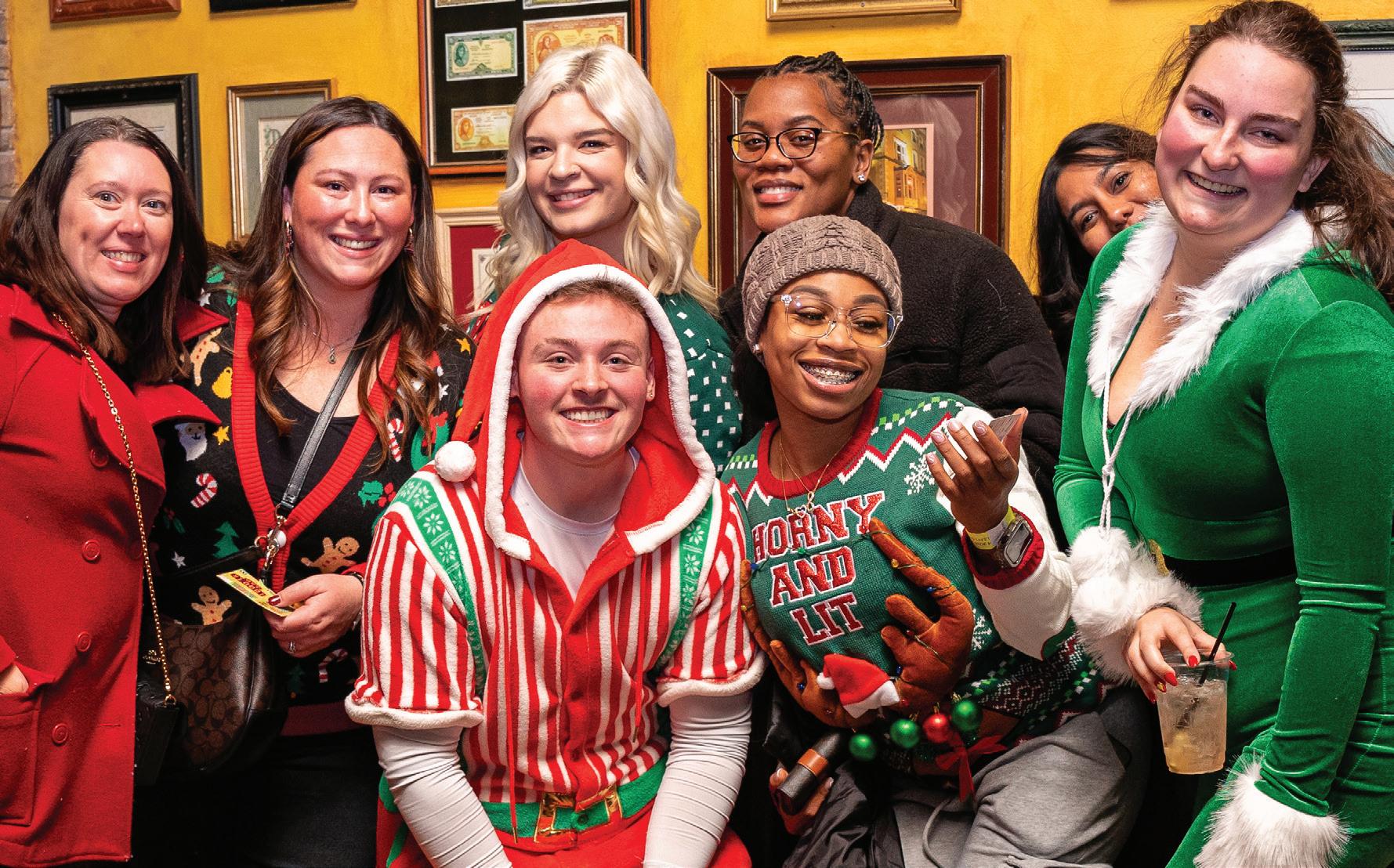Youth Cycling is Riding High
The Man Behind Buckley's Tavern
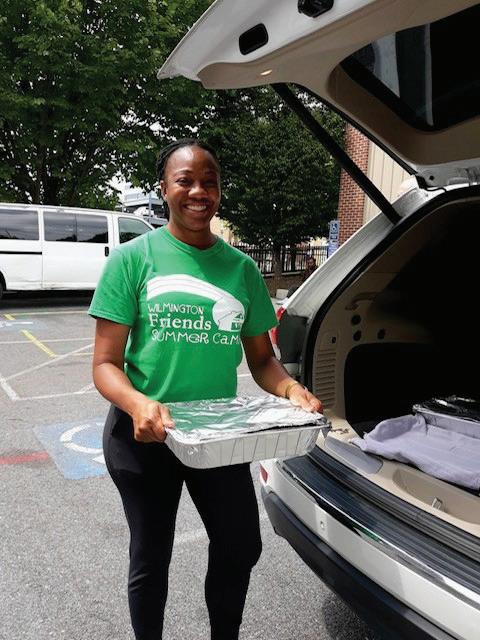

Katherine Ward is Quite a Story

Youth Cycling is Riding High
The Man Behind Buckley's Tavern


Katherine Ward is Quite a Story
Four local organizations that reflect the best in us
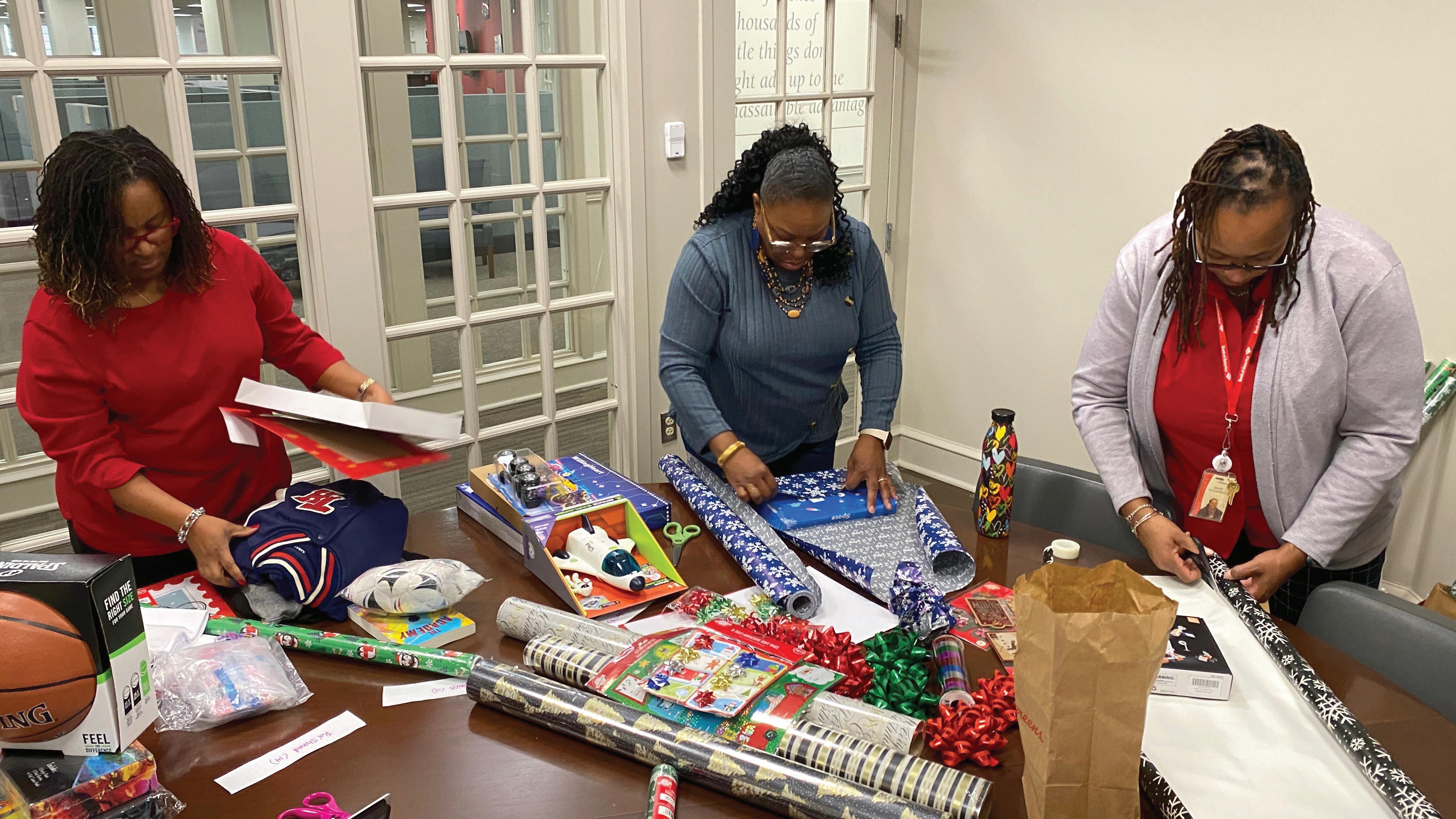
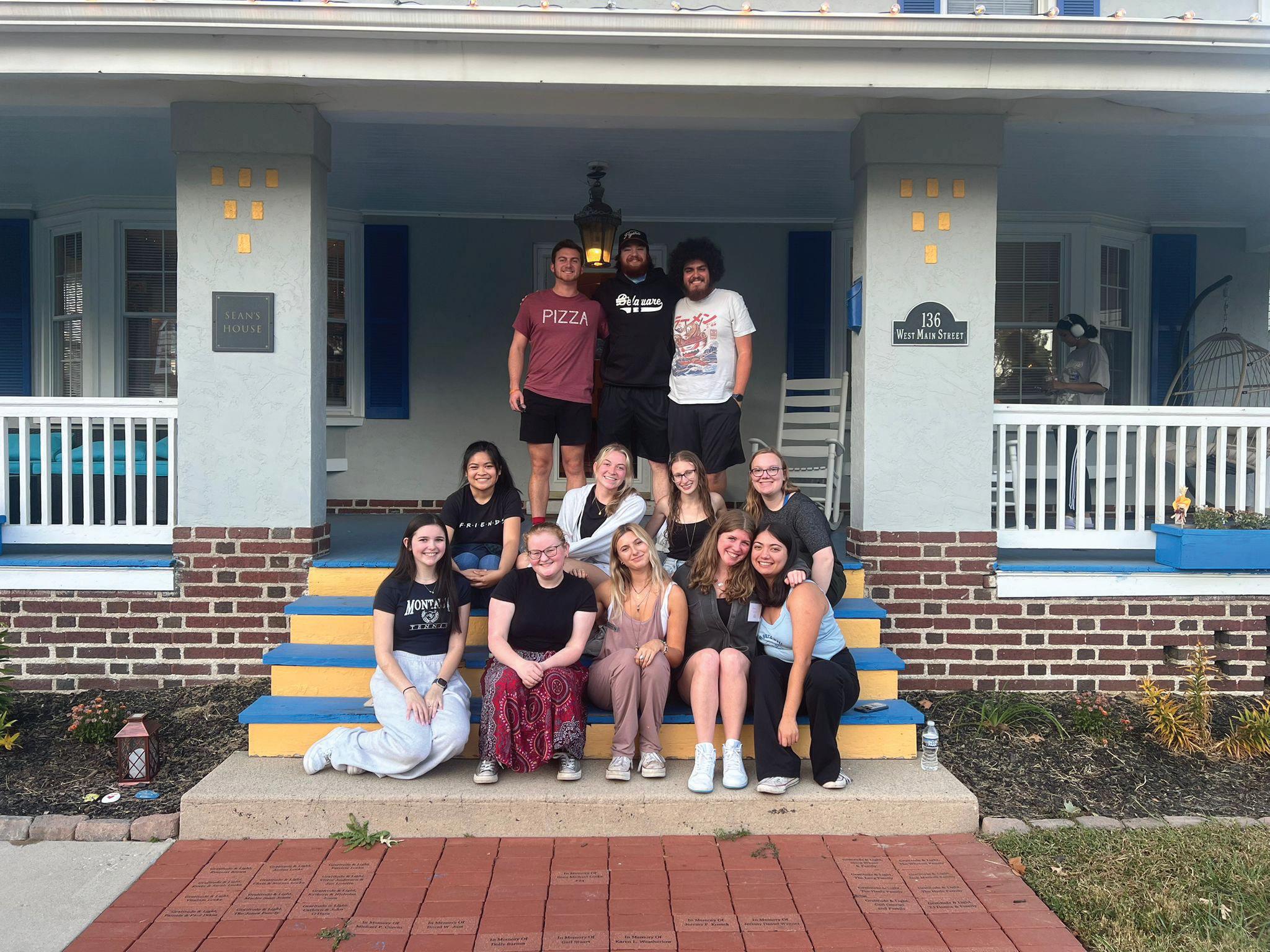









































































































































































































































































































































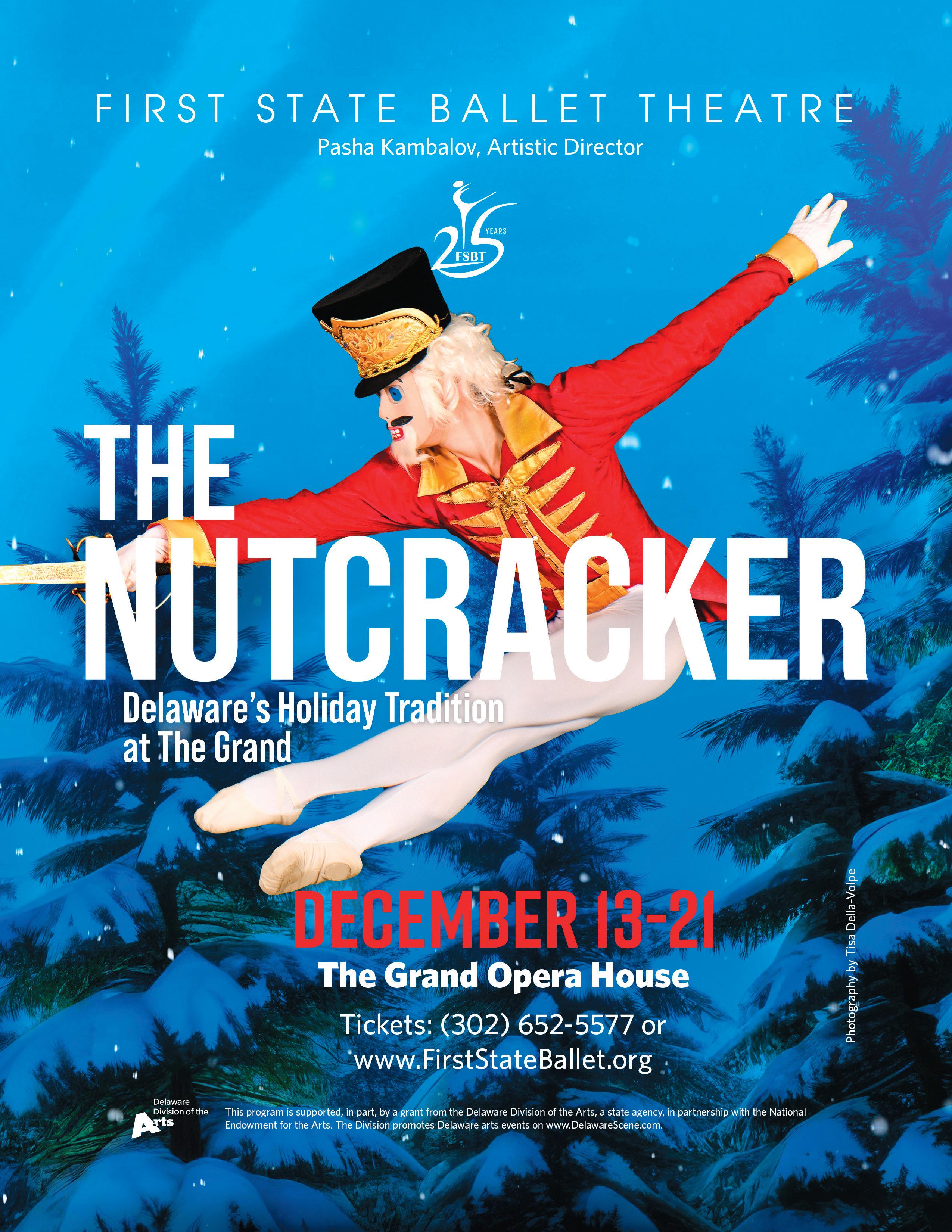
















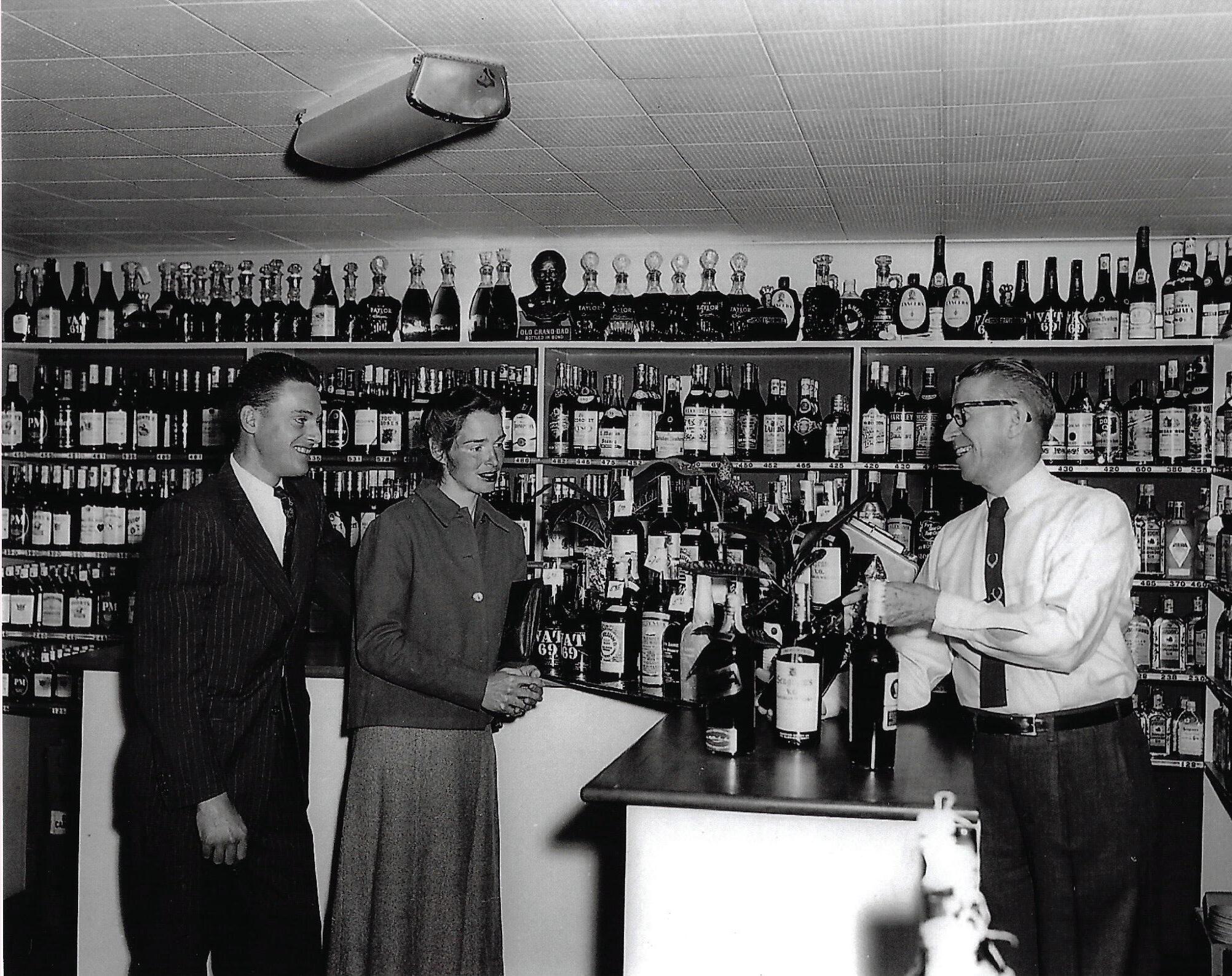






Publishing a monthly magazine in the age of TikTok has its challenges. It also has its rewards. One of those is being at the nexus of inspiring community stories. For 38 years, Out & About has been sharing such stories — as a result, we’re pitched fresh ideas on a neardaily basis. It’s flattering. And stimulating.
Each week, we sit down and talk through potential content for future issues. During that process, we review the latest suggestions from our readers. We also work into our discussion potential ideas we’ve discovered. It’s an exercise that’s not only productive but invigorating. Negative news may be good for clicks, but positive news is good for the soul. Four of these goodfor-the-soul stories appear in this month’s feature, Circles of Hope.
Sean’s House, West End Neighborhood House, Lasagna Love and One Village Alliance are small organizations doing big things in our community. They’re spotlighted not because they stand above, but because they represent community can-do — identify
a problem and provide a solution. No problem has ever been solved by merely affixing blame. Which brings me to a pivot point in this column: the importance of two simple words pertinent to this discussion — thank you. Their value is not diminished by repeated use.
It’s a point my wife makes often. On those occasions when I fail to use them, then attempt to justify the behavior by arguing it was implied by my “pleasant tone,” she looks at me as if I just skimped on the tip.
She’s right. Why leave it to chance? Just say thank you
So, thank you, Sean’s House, West End Neighborhood House, Lasagna Love and One Village Alliance. You’re representative of the many organizations who exemplify one definition of community we would all benefit from remembering — a feeling of fellowship with others.
While I’m at it, thank you, readers, for your suggestions. Please . . . keep them coming.
— Jerry duPhily



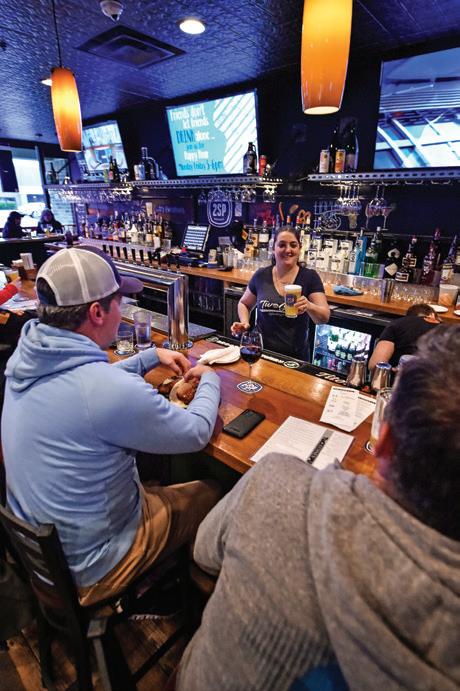








1 With 49-Across, important thing to do during Thanksgiving season
5 They can be “slid into,” online
8 Angelo’s Luncheonette order
11 Missing from base (abbr.)
12 Home run trajectory
13 Syllable from a crowd
14 Suit accoutrement that says, “I mean business!” 16 Function
17 Signal, on stage
18 Stadium snack, perhaps
20 Michael, of Dunder Mifflin
23 Phone or vision prefix
24 Naval vessel letters
25 Kyle Schwarber, for example
28 Imagine
31 Water monitoring grp.
32 Prefix for correct or pilot
33 Asparagus unit
35 Boat load, perhaps
37 Quiet, as a squeaky hinge
38 Like a bass note
39 Peak
44 Nickname for young Skywalker
45 “___ Been Everywhere” (Johnny Cash son)
46 World’s longest river
47 Animal enclosure
48 Donkey
49 See 1-Across
1 Space 2 ___ Jima
Swear 4 Vote in
5D November 27, 2025, e.g.
6 Diagnostic screening, for short
7 Start of a play
8 “Fists of Fury” star
9 Eyelid hair
10 Another name for Teddy 15 Bad thing to be stuck in 19 More than most 20 “How ya doin’?”
21 CBS crime show with many spin-offs
22 Accolade never achieved by Glenn Close or Alfred Hitchcock
23 An alternative?
25 PGA tourer

By Joe O’Brien and Michael Guarino (University of Delaware, Class of ‘29)

Complete puzzle, take a photo, send to: Contact@TSNPub.com. Subject line: November Puzzle. Deadline: November 19. Two correct puzzles will win a cool prize Last month's winners: Idil Dokucu, Robert Redcone



A monthly column in which we attempt, however futilely, to defend the English language
A reader who prefers anonymity questions two of the rules on the sign shown here, which she says has been on the wall of UD’s indoor pool for decades. Of the first circled rule, “Lifeguard must be present before entering pool,” she writes, “I’d like to see the lifeguard enter the pool without being present. How about: ‘Do not enter the pool unless the lifeguard is present’?” Of the second, “No food or drink is permitted on pool deck except plastic water bottles,” she comments, “I’ve never tried to consume plastic water bottles. How about: ‘No food or drink is permitted on pool deck except water in plastic bottles'?"
“War” endorses both edits.
• Reader Luann Haney submits this Delawareonline headline: “Personalizing Parking Spaces Is a Right of Passsage for Delaware Seniors.” No, it’s a rite (ritual, custom) of passage.
• Sean McKeown, of The Philadelphia Inquirer, left his modifier dangling with this: “Tied late in the fourth quarter, freshman kicker Mason Walters delivered his firstever field goal for Penn.” It was the game that was tied. Walters was free to run onto the field.
• BaytoBayNews.com, quoting Nicole Theis, president of the Delaware Family Policy Council: “‘It goes without saying, Charlie had a huge appeal to young men,’ she noted, adding that Mr. Kirk’s late wife, Erika, said during the memorial service that ‘Charlie wanted to save young men just like the one who took his life.’” This implies that not only was Charlie Kirk killed, but his wife is deceased. She is very much alive, and is his widow
• Melissa Ruggieri, of USA TODAY: “Ronson politely demurred the money twice until Combs barked at him with an expletive to take the money.” Demur (to raise doubts or show reluctance) doesn’t take an object, so the sentence should have read: “Ronson politely demurred twice when the money was offered, until Combs barked at him . . .”
• Demetrius Harvey, of the Jacksonville TimesUnion, described a piece of clothing I have long been familiar with but didn’t know the name of; however, he
canard
Pronounced ke-nard, it’s a noun meaning a false or unfounded report or story, especially a fabricated report; a groundless rumor or belief.
By Bob Yearick
misspelled it. Reporting on Travis Hunter, the No. 1 pick of the Jacksonville Jaguars, who plays both offense and defense, Demetrius wrote, “In recent days, he’s sported a penny to switch between the sides mid-practice.” Spelled pinny, it’s a derivative of pinafore and, in sports, means a sleeveless shirt or scrimmage vest worn over a team jersey to differentiate one side from the other.
• Colorado football coach Deion Sanders about a new assistant: “This guy knows what he’s doing, and he’s gonna be an intricate part of our success.” We’re pretty sure Deion was going for integral there.
• In the movie Friendship (Tim Robinson, Paul Rudd), a couple is standing in their kitchen and the wife says to her husband, “Bring this package to the neighbors.” The misuse of bring instead of take is maddeningly common, even though the rule is pretty simple: If the action is towards the speaker, use bring. If it is away from the speaker (as in this case), the correct choice is take
• Reader Janet Strobert submits this crying-outfor-editing excerpt from the website FloralEncounters. com (corrections in parens): “Japanese stiltgrass is a nasty invasive plant that is taking over huge tracks (tracts) of our countryside. It prefers semi-shaded and shaded areas so it has less (fewer) other plants to deal with and is effortlessly replacing them all as the main woodland undergrowth. This is great for the stiltgrass since it ensures that any competition that it might have is removed and it has a free rain (free rein) to take over . . .”
• An FBI spokesperson, describing an attack on ICE agents, hit my pet peeve button once again with this: “It required considerable pre-planning.” Pre-planning: when planning is never enough.
• A recent commercial on local radio proclaimed that “Carman Lincoln in New Castle is giving away free gifts.” Wait, not charging for gifts? And they’re free?
• Paul Myerberg, in USA TODAY: “Even still, the Nittany Lions were giving up just 4.7 yards per play, the Ducks’ second-lowest average in the first half under Lanning.” This classic pleonasm begins many an errant sentence. Delete “even.”

Contact me at ryearick@comcast.net for a fun and informative discussion on grammar. Buy The War on Words book at the Hockessin BookShelf, at Huxley & Hiro Booksellers on Market Street, or on Amazon.

By Brianna Hansen
As the weather cools and we start settling in for sweater season, there’s something extra comforting about cozying up with a pet, especially one who’s already mastered the art of relaxation. Senior pets may not get as much attention as bouncy puppies or playful kittens, but anyone who’s shared their home with an older animal knows they’re absolute treasures.
Older cats and dogs tend to come with a “what you see is what you get” charm. Their personalities are developed, their quirks well established, and most are already housetrained (many dogs are even leash- and crate-trained, too!). Simply put, they’re typically calmer and downright easier. They’ve outgrown the chaos stage, which means no midnight zoomies, no surprise messes, and no chewed-up shoes (you know, the exhausting stuff!).
What’s left is the best part: a loyal, loving companion who already knows the ropes and is more than ready to enjoy life’s quieter moments by your side, whether that’s a long walk through falling leaves, an afternoon napping in the sun, or an evening watching Netflix.
Still, many folks hesitate to adopt older animals, worrying about medical costs or how much time they’ll have together. Those are fair concerns … but the good news? Local shelters are ready to help! Humane Animal Partners and Faithful Friends (to name a few) offer lowcost veterinary care and vaccine clinics. Some shelters even offer financial resources for families in need, helping pet owners close the gap when unexpected or unmanageable expenses arise. Programs such as HAP’s Reggie’s Fund (for dogs) and Mooshi’s Fund (for cats) help keep beloved companions at home, making it easier for families to say “yes” to a senior pet without the fear of the unknown.
And here’s the kicker: adopting an older pet might just be one of the most rewarding decisions you’ll ever make. They seem to know they’ve been given a second chance, and they repay it with gratitude, affection, and a deep kind of love that’s truly hard to describe until you experience it. They remind us to slow down, appreciate the little things, and enjoy every moment … just what we all need this time of year!
—Want to lend a hand to senior pets (and all the others still waiting for homes)? Mark your calendar for Movies on Tap on Thursday, November 20 at Penn Cinema on the Riverfront in Wilmington. The event benefits Humane Animal Partners and Faithful Friends, with two film favorites to choose from — Trading Places or Planes, Trains and Automobiles — plus signature cocktail tastings from Tito’s Handmade Vodka. Tickets are just $25, making it an affordable way to toast to the season of giving. Learn more at HumaneAnimalPartners.org.
TURKEYS ARE LURKING

It's turkey time! Just one problem — those darn birds are on the loose! Tell us the four pages where you've spotted them and you could win a cool prize. Email your answer by November 19 to Contact@TSNPub.com with the subject line: I Found the Turkeys. We will choose three winners from correct submissions. Congrats to Omar Brown, Mark LaVere, and Joseph Sharpe, who found the books on pages 29, 53, 55, and 57 of last month's issue.
Whale of a Sale, Delaware’s largest garage sale, returns Saturday, Nov. 8 from 9am to 2pm at Concord Mall in Wilmington. Presented by the Junior League of Wilmington, this fundraiser offers more than 13,000 square feet of bargains, including clothing, furniture, housewares, books, and holiday décor. Shoppers will also find a boutique area featuring designer fashions and bridal gowns. Proceeds benefit the League’s mission of empowering women leaders and supporting its community initiative, Stand Up. Period., promoting menstrual equity in Delaware. More at JLWilmington.org/whale-of-a-sale.

HISTORIC ODESSA FOUNDATION SHOWCASES DELAWARE-INSPIRED ART
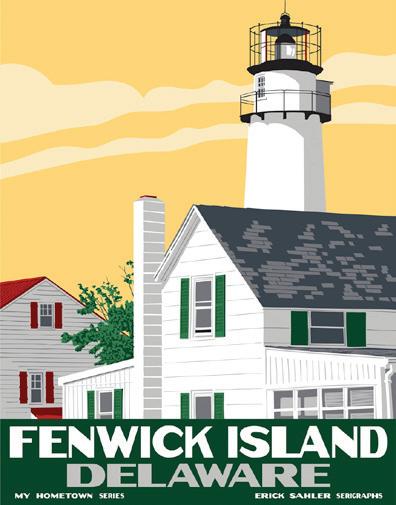
The Historic Odessa Foundation presents Here, There & Delaware: Travel Poster Prints & Illustrations of Erick Sahler, on view from October 28 to December 31, at the Historic Odessa Visitors Center Gallery (201 Main Street). Sahler’s nostalgic and colorful scenes of Delaware draw inspiration from the WPA (Works Progress Administration) posters of the 1930s and the mid-20th century American travel posters, blending vintage charm with contemporary artistry. The Foundation will host a free artist reception on Thursday, Nov. 13, 6–8pm, offering guests the opportunity to meet Sahler and view his work. More at HistoricOdessa.org.
On Thursday, Oct. 30, indie bookstore Huxley & Hiro celebrated its grand reopening at 601 N. Market Street, previously home to David Bromberg’s violin shop. The new space doubles the bookstore’s inventory and adds a micro Romance and Horror section in the historic bank vault inside the building. The upstairs area that formerly doubled as a recital area for Bromberg has been repurposed into the Huxley & Hiro Prose Parlor, which will host author events, along with music, comedy, and films. Also on site, Dueling Rabbits Cafe offers small-batch roasts, tasting flights and workshops. The bookstore’s former location at 419 N. Market Street will be transformed into a “Made in Delaware” retail incubator supporting local makers, starting with pop-ups during holiday weekends. More at HuxleyAndHiro.com.
DELAWARE SYMPHONIC WINDS FALL CONCERT
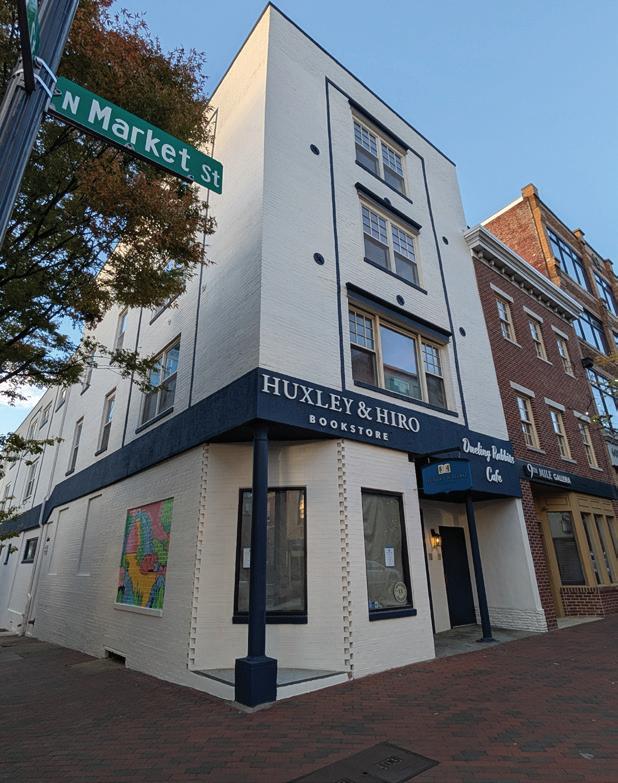
Delaware Symphonic Winds will perform its fall concert program, Suites, Sprints & Soundscapes , at Dover High School on Saturday, Nov. 1 at 7 pm and William Penn High School in New Castle on Sunday, Nov. 2 at 3 pm. The program features baritone saxophonist Steven Kieley performing Vongole! by Satoshi Yagisawa, along with audience favorites Overture to Candide by Leonard Bernstein and Suite from Pineapple Poll by Sir Arthur Sullivan. The concert also features a “Side-by-Side” experience, giving area high school band students the chance to perform alongside ensemble members. More at DelawareSymphonicWinds.org.

The Delaware Art Museum will welcome world-renowned composer Lord Andrew Lloyd Webber on Monday, Nov. 10 at 5:30pm for an intimate evening exploring his lifelong love of British PreRaphaelite art. Lord Lloyd Webber, who visited DelArt this past spring, is not only the celebrated composer of The Phantom of the Opera, Cats, and Evita but also one of the world’s foremost collectors of Pre-Raphaelite art. His conversation with DelArt curator Dr. Sophie Lynford will reveal deep connections between his private collection and the Museum’s own, which is home to the largest Pre-Raphaelite holdings outside the United Kingdom. The evening includes a cocktail reception, with proceeds supporting the museum’s exhibitions, education programs, and community initiatives. More at DelArt.org.

FSBT’S UP FRONT BRINGS
AUDIENCE UP CLOSE
First State Ballet Theatre presents Up Front on Market on Friday, Nov. 14 at 7pm and Sunday, Nov. 16 at 2pm in Studio One at The Grand (818 N. Market Street, Wilmington). This intimate program blends tradition with innovation, featuring excerpts from the classical ballet Paquita alongside two world premieres of contemporary works by Andrea Yorita and Zachary Kapeluck. With just 75 seats per show, audiences experience the dancers’ artistry up close. More at FirstStateBallet.org.

The Delaware Blue Coats announced their 2025-26 promotional schedule, kicking off Saturday, Nov. 8 at the Chase Fieldhouse against the Westchester Knicks, featuring a surprise giveaway for the first 500 kids. Theme nights this season include Italian Heritage Night (Nov. 15), Disco Night (Feb. 21), Beach Day (Mar. 1) and more, plus the new Kids Countdown to 2026 New Year’s Eve game. The Blue Coats will also feature three scheduled Dollar Dog Nights (Dec. 5, Jan. 24, Mar. 6), along with a new Pregame “Blue Light Special” featuring discounts on select concessions items for all home games. Single-game tickets, including courtside offerings, are available now. More at BlueCoats.Team.
City Theater Company, now in its 32nd season, will give audiences the “old razzle-dazzle” this December with Chicago, one of the most popular American musicals of all time. Artistic Director Kerry Kristine McElrone directs and promises a whole lotta grit with a little glam, as CTC transforms their performance home at The Black Box in The Delaware Contemporary (200 S. Madison Street, Wilmington) into a 1920s speakeasy for this tale of murder, moxie, and mayhem. Running December 1220, Chicago stars Dylan Geringer as Roxie Hart and Dana Michael as Velma Kelly. Tickets at City-Theater.org.
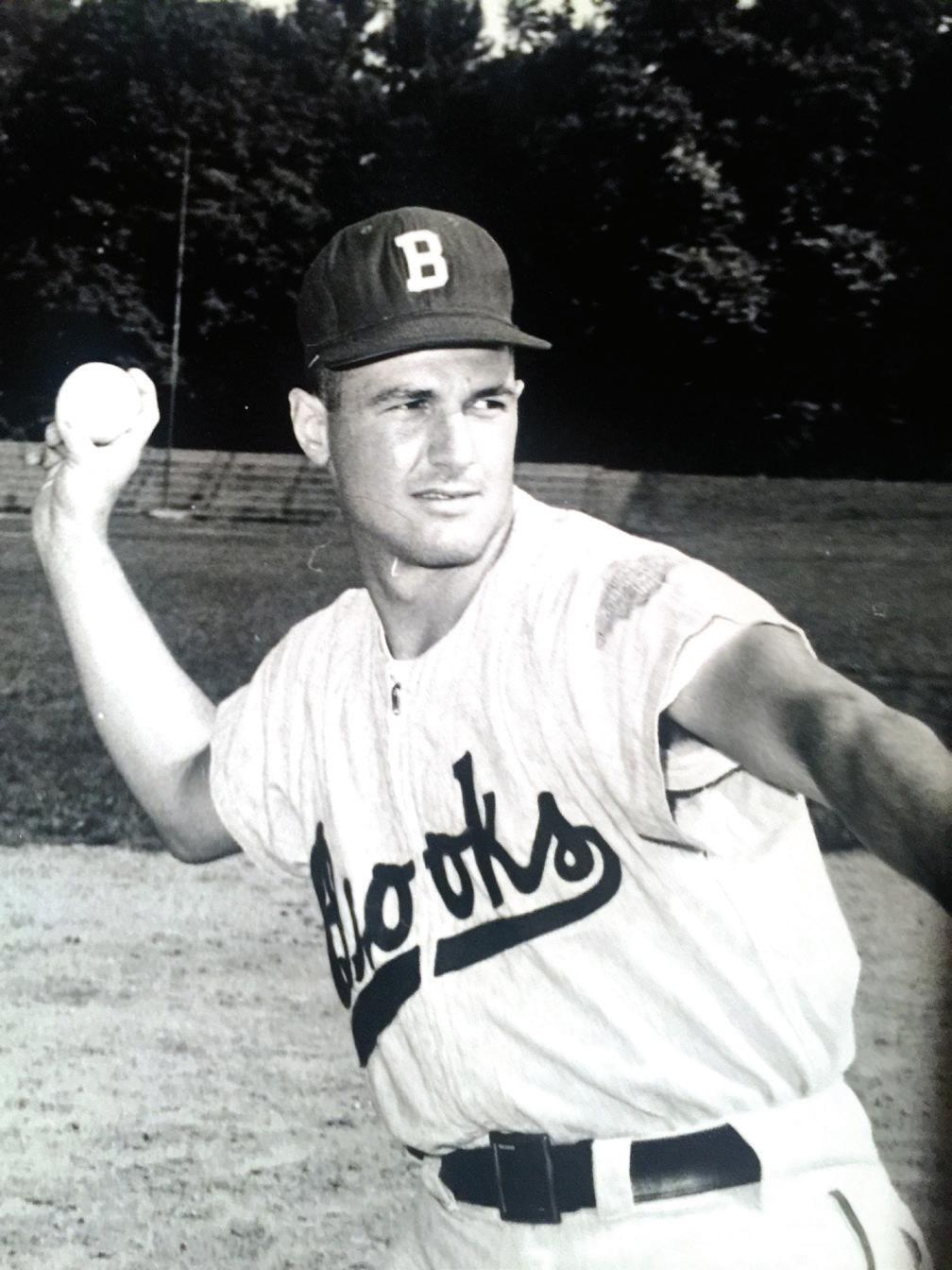

For eight decades, Lou Romanoli has been a leader in Delaware sports — pitching, coaching, quarterbacking, running, managing, promoting
By Chuck Durante
In the 1950s, he was a centerpiece of University of Delaware’s first great baseball team. In the 1960s, he brought big-name athletes to Wilmington to win championships in the city’s golden age of community sports. In the 1970s, as he watched his three children lead Friends School to championships, he embarked on a road-running career where he became a pacesetter. When his legs called time out, he became a serious cyclist.
A three-sport athlete at Wilmington High from Union Park Gardens, Romanoli was a pitcher, shortstop and third baseman for the 18-3 Blue Hen team that made the 1956 NCAA tournament in Tubby Raymond’s first year as coach. He continued after graduation in the Wilmington Semi-Pro League, which he eventually took over by assembling a Brooks Armored Car team in 1963 with five former major leaguers plus Ruly Carpenter to win the title, while regularly drawing 4,000 spectators to 18th and Van Buren.
That same year, he captained Brooks champions in the Industrial Basketball League and the Wilmington Football League, where he quarterbacked his team to three titles in five years. Hired in 1967 as general manager of the Wilmington Blue Bombers, he built the Eastern Basketball League champions with future NBA and ABA players, several of whom put down lifelong roots in Delaware.
In 1966, he branched into running. Over 30 years, he
annually logged 3,000 miles, completed the 1980 Boston Marathon, and ran the Caesar Rodney Half Marathon a record 25 consecutive years, while managing one of Wilmington’s leading printing businesses with his uncle Remo, until double knee replacement surgery turned him into a dedicated cyclist. Into the pandemic, he logged up to 180 miles a week on his bike.
Perpetually vital at 90, fresh from his 57th extended summer visit to Italy, he annually reserves a restaurant where he hosts more than 100 friends for the NCAA men’s championship.
— Founded in 1976, the Delaware Sports Museum and Hall of Fame is located on the Wilmington Riverfront at 801 Shipyard Drive on the first base side of Frawley Stadium. Sports fans can tour the museum for free each Saturday from 10am to 1pm and for two hours before every Blue Rocks home game.








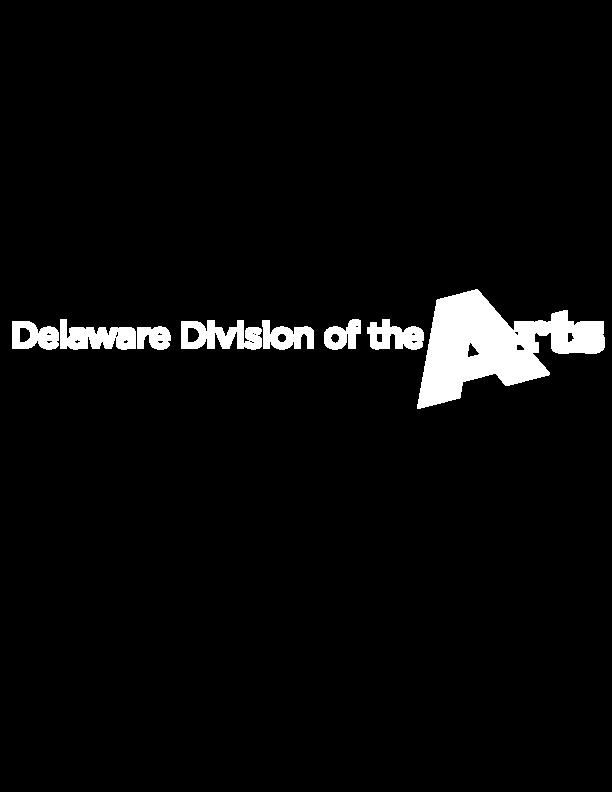
FRIDAY, NOVEMBER 7 5pm Start
The Delaware Contemporary
200 S. Madison Street
656-6466 • DeContemporary.org
Exhibition: Fall 2025 Biennial: Art + AI and On Madison II
Juice Joint Gallery
323 S. Justison Street 510-2762
Exhibition: Glimmer group show
Starbucks @ Justison Landing 329 S. Justison Street 510-2762
Exhibition: 25 Years in the Making by Elissa Davis
2nd & LOMA Leasing Office
211 N. Market Street 655-0124 • 2ndAndLoma.com
Exhibition: Coty Angle by Liezel
Bridge Art Gallery 213 N. Market Street
353-4527 • BridgeArtGallery.net
Exhibition: Transformed
Chris White Gallery
701 N. Shipley Street 475-0998 • ChrisWhiteGallery.com
Exhibition: Nuestras Historias Group Show curated by Cony Madariaga
Christina Cultural Arts Center
Edward Loper, Sr. Gallery 705 N. Market Street 652-0101 • CCACDe.org
Exhibition: Artofn.irv by Nicholas Irving
City of Wilmington’s Redding Gallery
800 N. French Street 576-2100
CityfestWilm.com/Redding-gallery
Exhibition: Art Works For All Annual Exhibition


The Grand Opera House 818 N. Market Street
658-7897 • TheGrandWilmington.org
Grand Gallery: Longview Gardens by Julianne M. Long
baby grand Gallery: Home for the Holidays by Pam Bounds
John William Gallery 1313 N. Market Street
585-317-5409
JohnWilliamGallery.com
Exhibition: Colorful Voices: Taylor Gordon, Alim Smith, Manuel Ramos
LaFate Gallery
227 N. Market St. 753-5789 • LaFateGallery.com
Exhibition: Art of Wine & Fall Beauty
The Little Huxley at the Hotel du Pont 111 W. 10th Street 439-0805 • HuxleyAndHiro.com
Exhibition: The Book is ALWAYS Better by Dannielle Vincent
MANE Gallery at the Tina Betz Urban Artist Exchange
1509 Clifford Brown Walk, Studio #1 576-2100
CityfestWilm.com/uae-amphitheater Exhibitions: Unbridled (Studio #1); Imagining Joy (Studio #3)
Mezzanine Gallery
820 N. French Street 577-8278 • Arts.Delaware.gov
Ehibition: Urban Dwellers by Kim Klabe
MKT Place Gallery
200 W. 9th Street
289-6772
Exhibition: At Home, On Stage by E.Lizé
The Queen
500 N. Market St. 400-7020 • TheQueenWilmington.com
Artist: Marcus “Marchitect” Watkins
Next Art Loop: DECEMBER 5, 2025
The Sold Firm
800-B N. Tatnall Street
689-3237 • TheSoldFirm.com
Exhibition: Ameriica Has A Problem
Starbucks 627 N. Market Street
299-9980
Exhibition: Between Shadows and Light Group Show
Wilma’s 900 N. Market Street 761-0564 •GoodTimeWilmas.com
Exhibitions: Forward II Group Show by The Art Battle Artists; From The Root by Art Battle Winner Vincent Rivera
Blue Streak Gallery 1721 Delaware Avenue
429-0506
Exhibition: Recent Adventures by Jeremy McGirl
Church of the Holy City 1118 N. Broom Street 416-0550 • ChurchOfTheHolyCity.org
Artist: Three Views of Nature Group Show
Howard Pyle Studio
1305 N. Franklin Street 656-7304
Artist: Carol Mangano
Arden Buzz-Ware Gallery 2119 The Highway, Arden 981-4811
Exhibition: Whispers from the Walls by Erica Brown
Finist & The Owl 811 Brandywine Blvd, Bellefonte 786-228-6638 • FinistAndTheOwl.com
Artist: Desi Steele
The Station Gallery
3922 Kennett Pike, Greenville 654-8638 • StationGallery.net
Exhibition: My Marsh - New Paintings by Michele Green

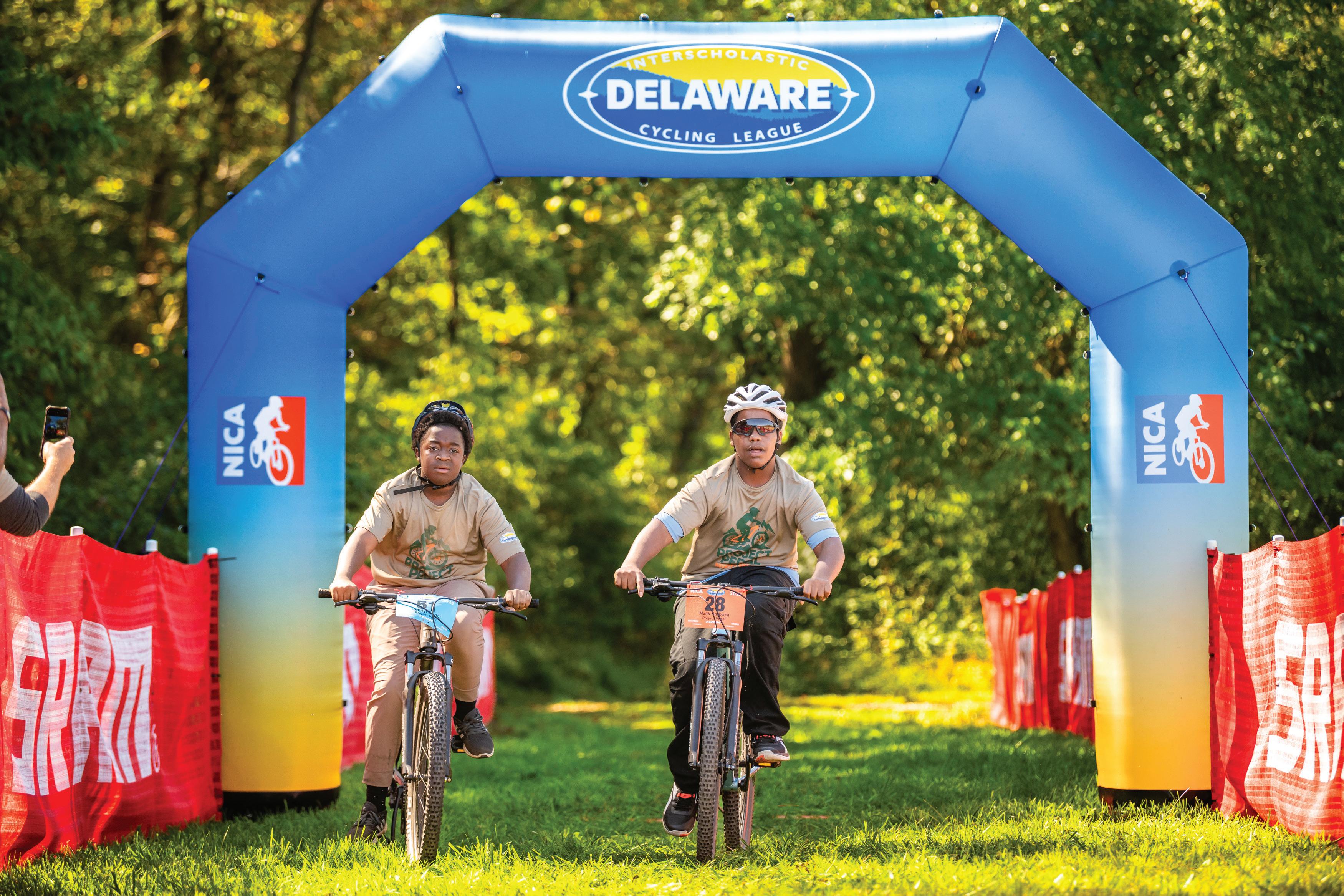
The Delaware Interscholastic Cycling League was an experiment in 2022. Now its doubled in size and speeding toward a community near you.
Mountain biking might not be top of mind when thinking about youth sports in Delaware, but thanks to Charles Barilo, league director of the Delaware Interscholastic Cycling League (DE NICA), and his dedicated team, it is here, growing, and coming to a town near you. Established as a state league in 2022 by founders Maria Dziembowska and Scotty Roberts, DE NICA
is comprised of eight mountain bike teams across Delaware serving just over 100 student-athletes in grades 5-12. As one of 33 state affiliate programs of the National Interscholastic Cycling Association (NICA), DE NICA connects youth to the sport of mountain biking to teach cycling skills, build character and community, and foster an interest in environmental stewardship and adventure.
By Catherine Kempista >
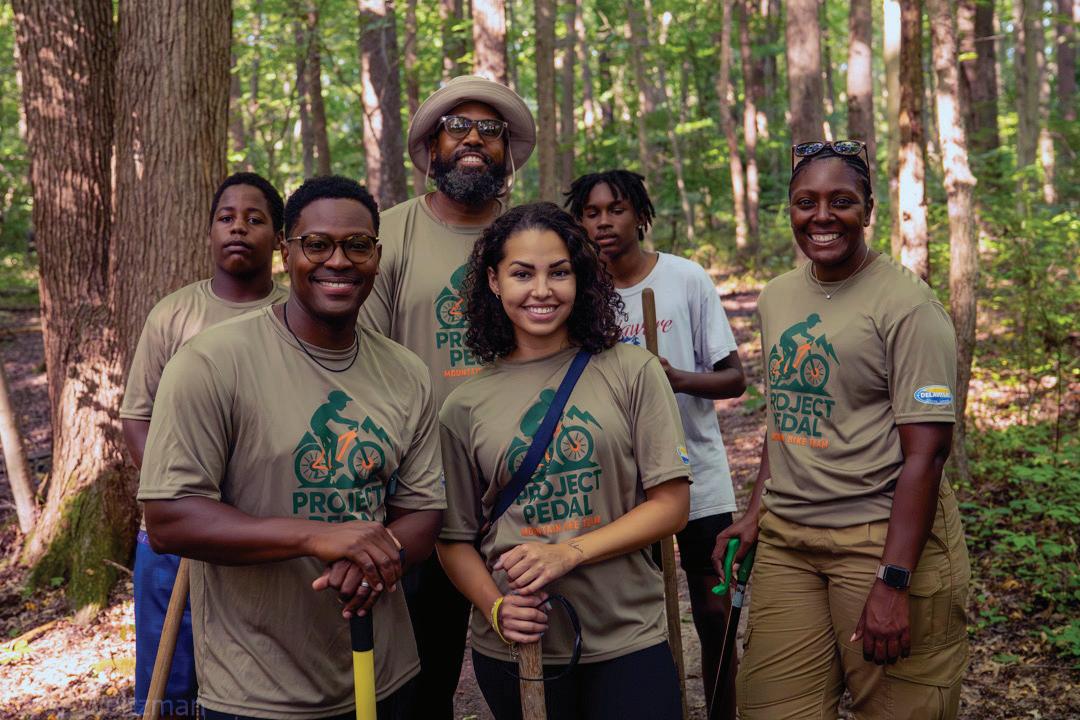
While the success of DE NICA has not come as a surprise to long-time riders in the state’s close-knit cycling community, its rapid growth year over year is a solid indicator that mountain biking is a welcome addition to the range of opportunities for Delaware kids.
“Every day on a bike is a good day on a bike,” says Nathan Johnson, captain for Salesianum Mountain Bike Team.
In 2023, DE NICA had 58 registered student-athletes and grew to 73 in 2024. Today, the Delaware league has 109 registered riders, representing nearly 2x growth in its participation from its inaugural season. It added two teams this year, and Barilo has plans for a couple more in 2026.
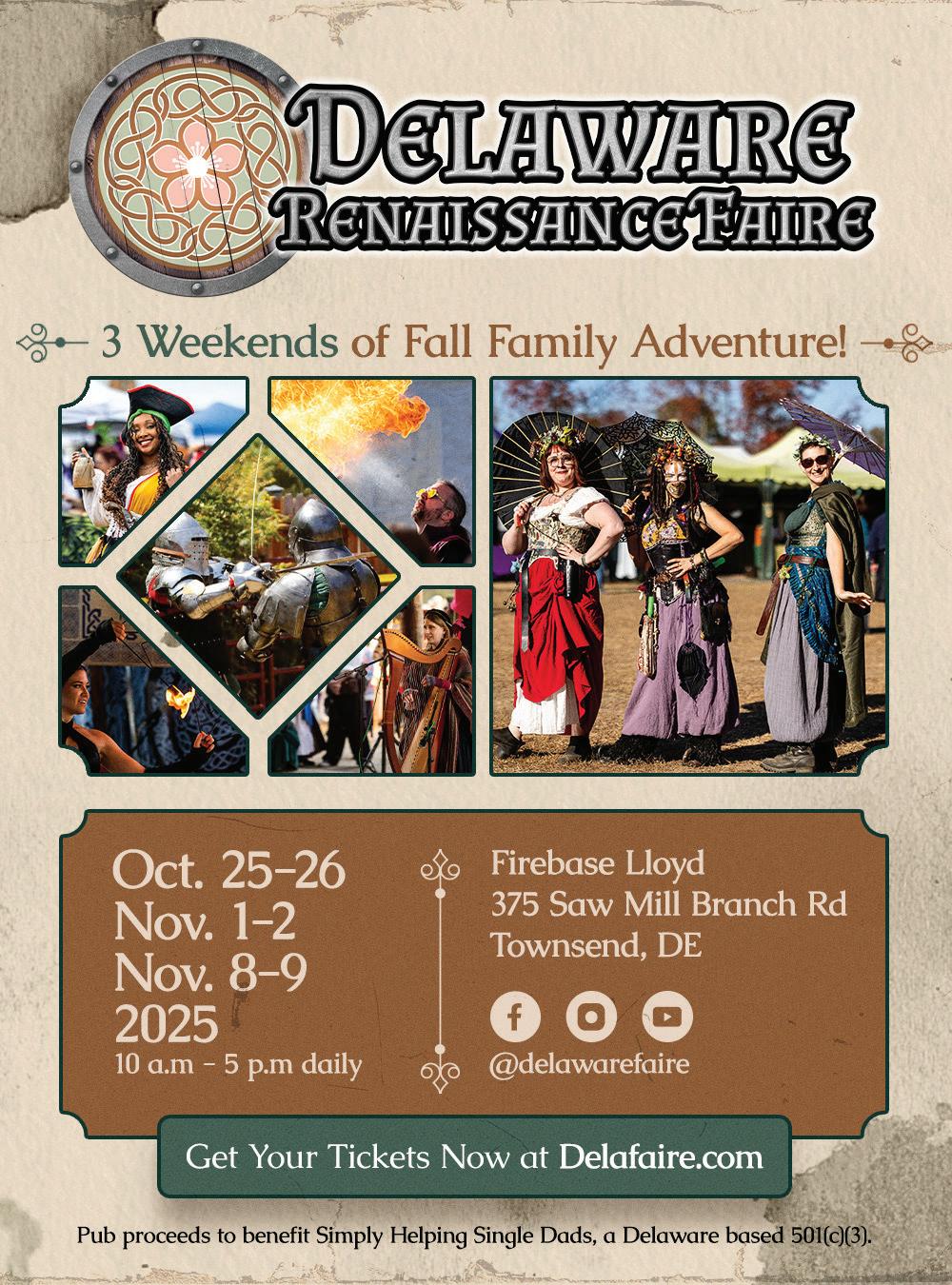
“This organization is just a platform for kids to explore, develop, and grow at the rate they deem fit,” says Barilo. “And that's why our variance in what we're offering, whether it's cross-country racing or adventure riding or GRiT activities or Teen Trail Corps work, is a home for so many people.”
DE NICA became an official NICA affiliate in 2022, but efforts to get a team off the ground began in 2019 when Dziembowska started seeing leagues pop up in Maryland and Pennsylvania.
“When I connected with NICA, there was an opportunity to just start with a team and have them participate in one of the leagues, like Pennsylvania, which is what we did,” says Dziembowska.
That team became the Delaware Dirt Destroyers, a Newark-based composite team and the de facto representatives of the First State in regional competition at the time.
As word spread, interest grew quickly, and parents of middle and high school students reached out. And while the COVID pandemic initially slowed outreach, interest in the sport exploded as outdoor activities became one of the ways people could be together safely.
“You had this outdoor boom, and then, we saw the big bike boom, which began to give the whole thing some fuel,” says Barilo.
It became clear to Dziembowska and Roberts that




enough interest existed to put in a proposal to NICA to establish a state league. Once the proposal was approved, the focus became fundraising and getting more teams up and running in Delaware.
Because the Dirt Destroyers was the model of what a successful team could look like in the new league, it served as a coaching-and-rider incubator for many of Delaware’s early teams.
“It was really nice to have the Dirt Destroyers there and say to these champions who wanted to start their own teams, 'come on board as a coach, see how things are run, and then, you can spin off as a team the following year,' ” says Dziembowska.
Because the league works from the model of fun, inclusivity, and adventure set forth by NICA, the league invites riders of all abilities and interest levels to join. Race competition is available but is not a requirement for membership.
“It is absolutely different than all the regular, what I would call, school sports,” says Lori Martin, team director of the Sussex Sand Sharks and the Delaware League Girls Riding Together (GRiT) coordinator. “The thing I like about NICA is you don't have to try out. If you show up and you want to ride your bike, we're going to show you the proper way to do it without hurting yourself and to have fun.”
The first stop for many of the DE NICA student-athletes new to the sport is a “Try-It Ride,” which is a free activitybased event led by licensed mountain bike coaches and DE NICA league staff to gauge a kid’s interest. No experience is required, and equipment is available to those who need it.
Students can also get introduced to the sport through local mountain bike camps, like Salesianum School's summer camp. Kids who attend the camp and show an interest in the sport, but aren’t students of the school, are connected to composite teams in their area.
“That's how I kick off my season, and that's very intentional,” say Colbe Klein, team director for the Salesianum Mountain Biking Team. “It gives people an opportunity to experience it.”
Currently, the league’s eight teams represent a wide spectrum of riders who are drawn to the sport. Direct spinoffs from the Dirt Destroyers include Sussex Sand Sharks, the Lewes-based team; Brandywine Devo, the North Wilmington-based team; and the Dirt Surfers, the Middletown-area team. The 302 Trekheads, which is the Urban Bike Project’s mountain bike team, and UrbanPromise Wilmington Trailblazers, were created out of Wilmington nonprofits with youth programming.
Student-athletes riding for 302 Trekheads participate in Urban Bike Project programs, such as school outreach, summer camps, and its youth shop, where kids can learn bike mechanics and repair. While they are one of DE NICA’s smaller teams, many of its riders come to the team with a skill set and proficiency that translates well to mountain biking.

“It's remarkable what these kids can do the first time they hit dirt,” says Laura Wilburn, executive director of Urban Bike Project and 302 Trekheads team director. “They are better at the technical aspects of riding, like within a month into the season, than I am. The things that often are more challenging for them are climbs and understanding how their traction differs in dirt than it does on pavement.”
The UrbanPromise Trailblazers team athletes are middle and high school students associated with its school, afterschool programs, summer camps, and employment program. Unlike the Urban Bike Project that has a mission based in cycling, the UrbanPromise team emerged from its UrbanTrekkers program.
“Trekkers is an outdoor experiential mentorship and leadership program for our teenagers, so they choose to go on adventures like biking, skiing, camping, and rock climbing,” says Keefe. “Ultimately, we want to introduce them to a wide variety of experiences, places, skills, people that might otherwise be inaccessible to them.”
The Salesianum Mountain Biking Team stands alone as the only school-based team in the league, and with 30 registered riders, they are currently its largest squad. The team initially started as a school club by Klein, another avid mountain biker who wanted to bring the sport to his students.
“When DE NICA was founded, I jumped at the opportunity to do whatever I could to make that happen for the school and the guys,” says Klein.
Project Pedal, one of the league’s newest teams, may have the most unique origin story. It emerged as a collaboration between New Castle County’s Project SEED and local cycling group Pedal with Purpose (with support from New Castle County Police (NCCPD) and the Garfield Park PAL Center).
At the center of the team’s story is George Corbin, Jr., who is the team director of Project Pedal, the founder of Pedal with Purpose, and a Project SEED staff member. Like many of the league’s team directors, Corbin is an avid cyclist






who has been spreading the word on the benefits of biking for years. However, Corbin took his passion for the sport to the next level when he officially founded Pedal with Purpose in 2021 in response to the post-COVID cycling boom.
“In 2020, people are blowing my phone up asking where can I get a bike? What can I do?,” says Corbin. “That's how Pedal with Purpose was formed, just getting adults on bikes and teaching them, literally A to Z, like we teach the youth now with the mountain biking.”
Through his experience as a triathlete and cyclist and his work with Project SEED, a county program aimed at supporting neighborhoods self-sufficiency and sustainable growth, he knew cycling was a great way to help kids build community and create opportunities for personal growth.
At the same time, Barilo was working to build new teams to expand the league, so when the two met to discuss the possibility of creating a new team that married all the groups and interests together to get more kids on bikes, it was a perfect match.
Today, Project Pedal has eight student-athletes in grades 7 through 12 and a coaching staff that consists of current and retired NCCPD officers, county employees, and Pedal with Purpose coaches. In its first year, team recruitment has been a grassroots approach, offering the opportunity to kids engaged in PAL and Project SEED programs and through word of mouth.
“I joined the team because I was working with Project Seed and helping them create the team,” says Aahmad Rutland, Project Seed student-athlete. “So when we got the bikes, I fell in love with the sport. It has helped me meet a lot of new people that are interested in the same things I am.”
While many of its athletes came to team with basic riding skills, the transition to mountain biking with its unpredictable terrain, varied riding techniques, and exhausting practices has been a challenge the team has taken in stride.
“I’ve watched our student-athletes light up during their first night ride; take a fall and get right back on; and show a positive shift in attitude after finally conquering a root or a ‘gnarly’ hill,” says Sergeant Tracey Duffy, commander of the NCCPD Community Services Unit and Project Pedal coach. “Those are the moments every coach lives for — seeing them push past fear and realize they’re capable of more than they thought.”

While the league is still in its infancy, the community it has created in its immediate wake and the positive effects it has had on its student-athletes is evident.

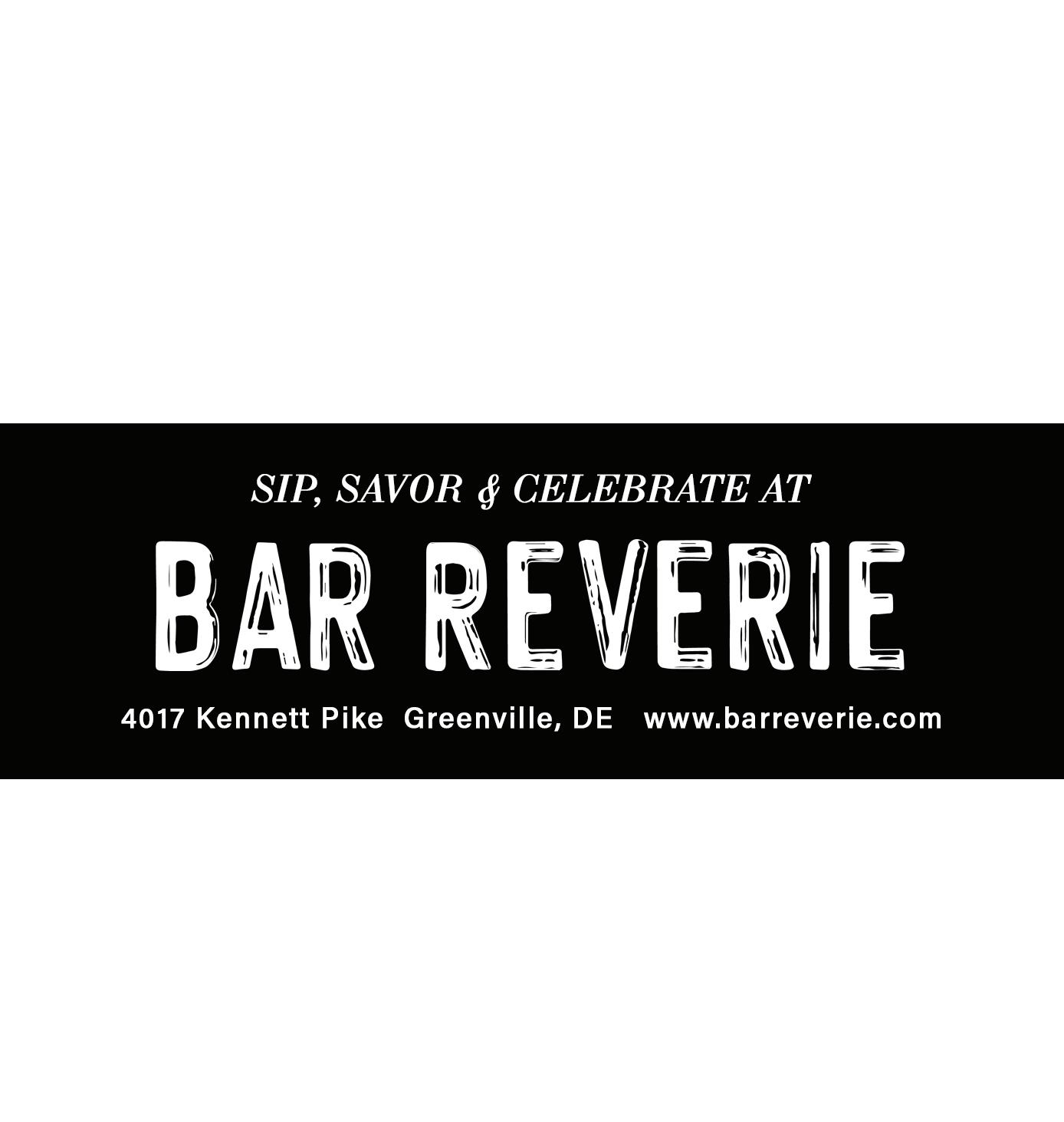

“Being on a DE NICA team not only helped to develop my skills as a rider but also as a person,” says Molly Sullivan, Brandywine Devo student-athlete. “I've become more confident in speaking with other people after finding myself in countless small-talk situations with coaches and parents that I may not know as well, and that has helped me on the trails and in classrooms. Overall, I think the easy, welcoming community that DE NICA teams provide is the greatest part about our league.”
And parents agree.
“One of the greatest benefits has been him being accountable for a team, knowing he has to get to practice on time — there's that connectedness because he's a part of a team,” says Sunsearra Ruffin, mom of Randolph Ruffin, 302 Trekheads student-athlete. “He’s starting to recognize accountability for his bike itself, and that accountability is starting to translate to other things.”
Building on the momentum from the positive response the league has received, Barilo hopes to create more opportunities for Delaware kids to become part of the NICA community in 2026 and beyond.
“The future for us is to be in schools to make mountain biking more of a mainstream thing here, because we have beautiful outdoor spaces, we have very close proximity and access to trails, and our kids need it,” says Barilo.
To learn more about DE NICA and ways to get involved, visit DelawareMTB.org.

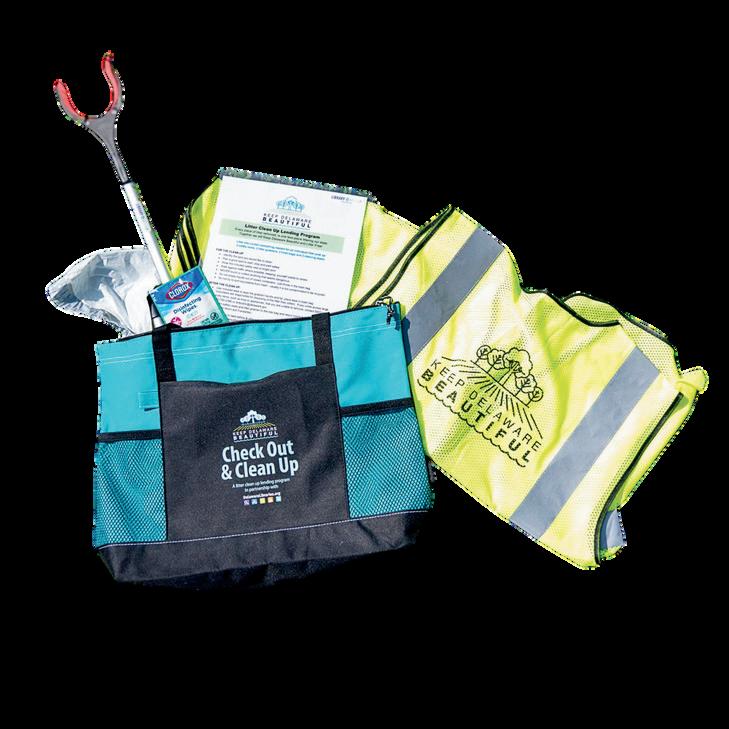






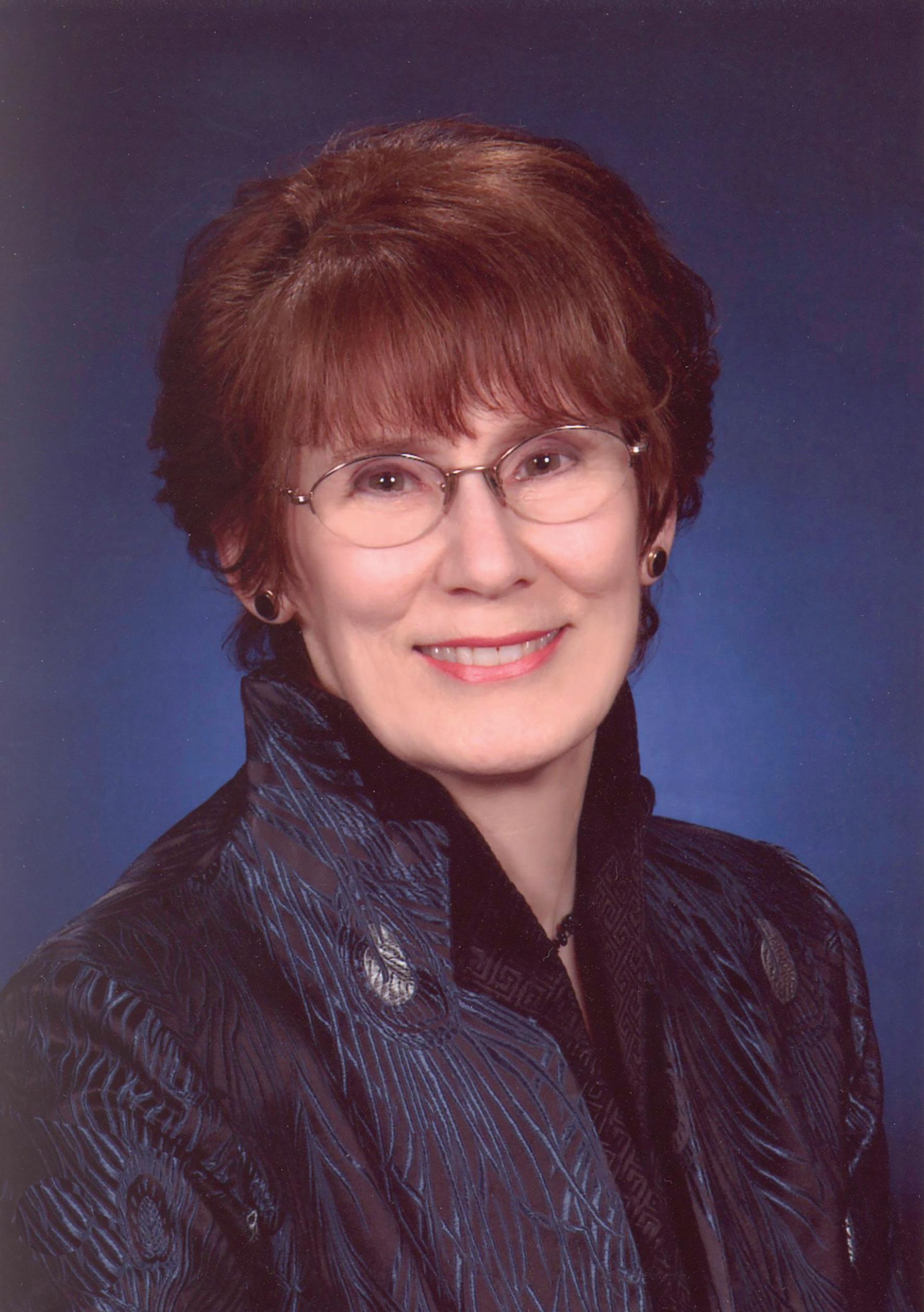
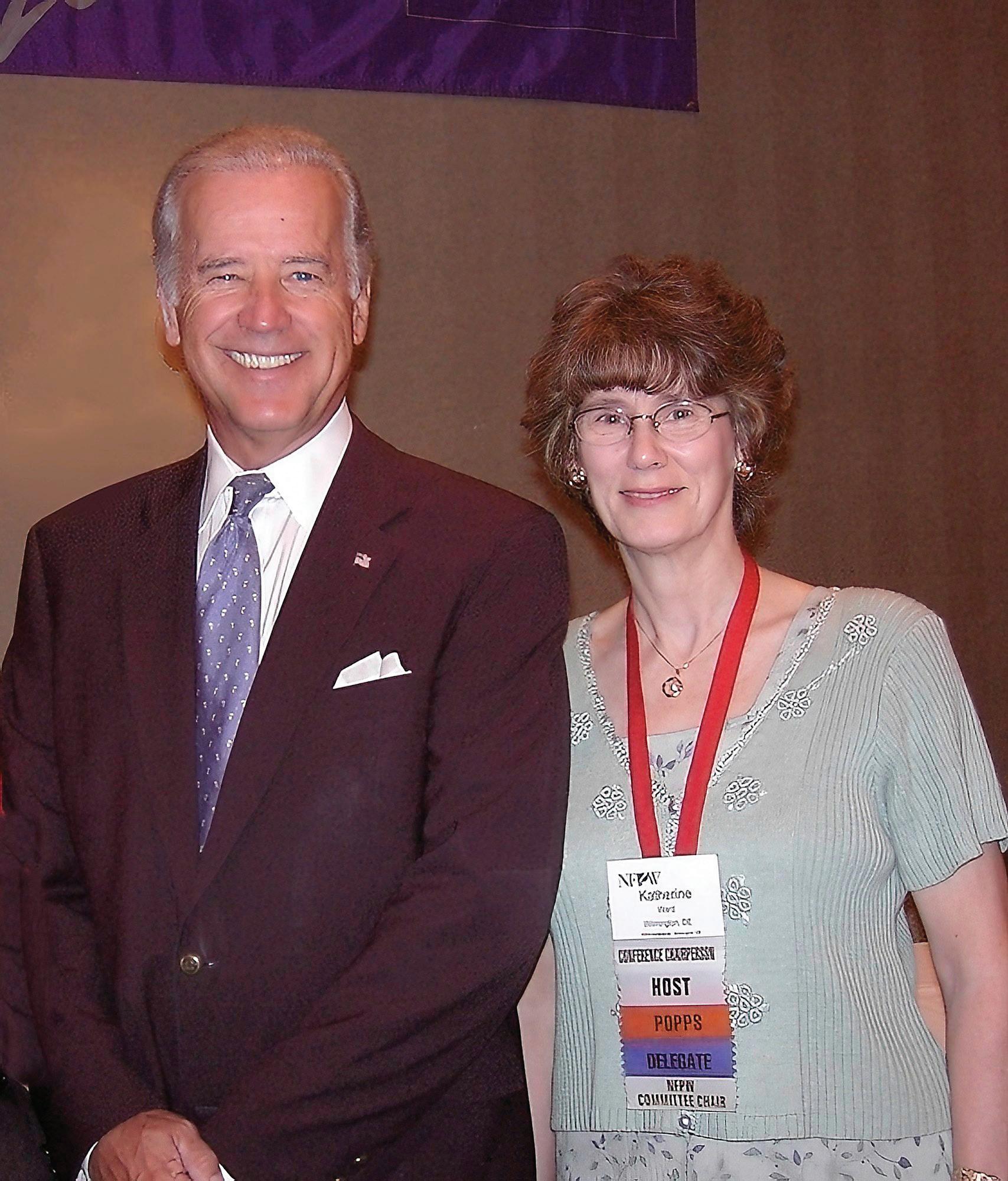

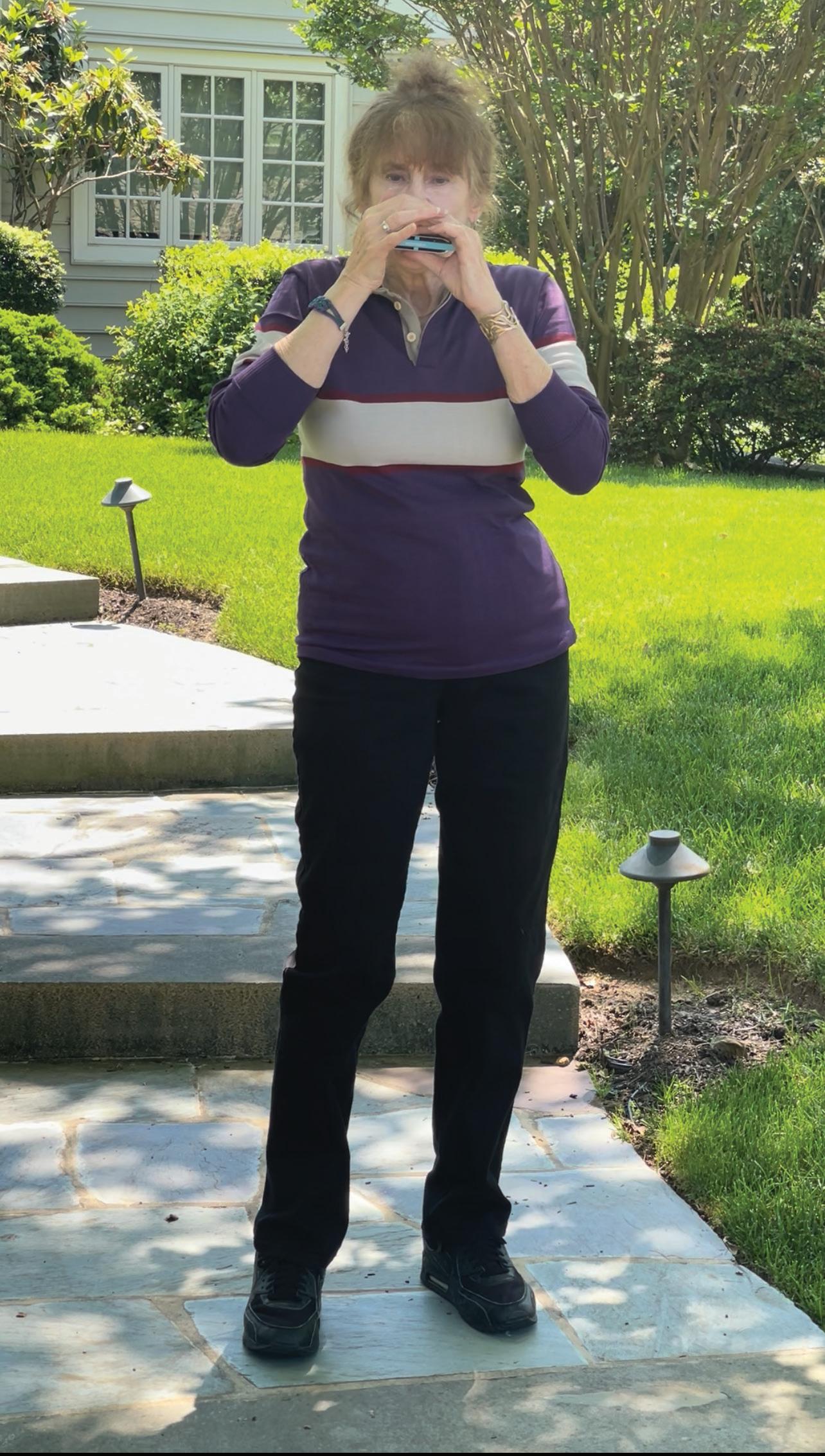

Katherine Ward rejects the title, but consider: She’s a writer, editor, leader of the Delaware Press Association, owner of several harmonicas and a radial arm saw — for starters
By Bob Yearick
Looking for someone to write your life story? Or someone to edit your life story?
What about a leader and organizer of, well, almost anything: a statewide association for professional communicators, a church fundraiser, a Girl Scout troop, a Boy Scout troop, or a campaign to establish the Office of Delaware Inspector General?
Need a bit of carpentry done around the house — repairs, remodeling?
How about someone to cook a full-course Thanksgiving dinner? Followed, perhaps, by lively harmonica music?
Or maybe you just want to play catch in the backyard — with an ex-ballplayer who still has a pretty good arm.
Meet Katherine S. Ward. Though she eschews the title “renaissance woman” (for one thing, she claims she’s not good at math), Ward handles those chores — and more — with seemingly boundless energy.
For the past 25-plus years, she has focused much of that energy on leading the Delaware Press Association (DPA), a group of more than 120 journalists, writers, public relations specialists, graphic designers, photographers and educators. Under her guidance, the DPA has become one of the strongest and most active of the 24 state chapters of the National Federation of Press Women (NFPW) — an organization that’s also open to men. The DPA schedules several events each year, and its annual Professional Communications Contest draws more than 300 entries from all over the state. >
It’s no coincidence that one of the founders of the DPA, in 1977, was Ward’s mother and role model, Mary Sam Ward. Any profile of Katherine Ward necessarily starts with her mother.
A warm but formidable woman, Mary Sam, as everyone called her, grew up on a farm in Missouri, went to a oneroom schoolhouse, and later taught there to earn money for college — Northeast Missouri State, where she earned a history degree.
At the start of World War II, she was one of a select group chosen for the first officer training class of the Women’s Army Auxiliary Corps — which quickly became the Women’s Army Corps (WACs). Assigned to the Pentagon, she took classes at nearby Fort Washington, Md., where one of the instructors was George B. Ward Jr., a young army officer and native Delawarean. Teacher and student fell in love and were married in 1943.
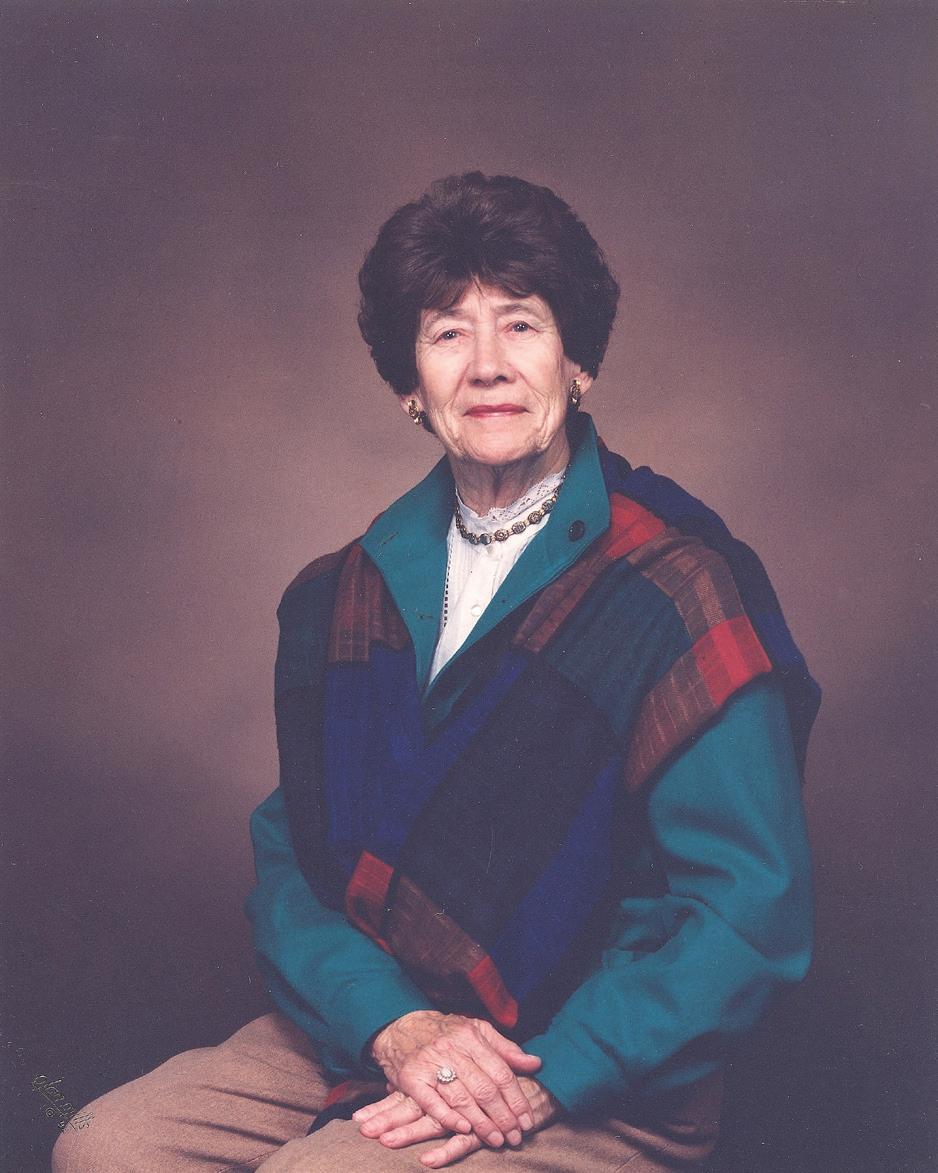
letter doesn’t stand for a name; it’s simply an initial.
When peace came, the Wards moved to Delaware, and George assumed his old job in marketing for the Hercules Powder Co. A son, George III, joined the family in 1947, and Mary Sam managed motherhood while earning two master’s degrees at the University of Delaware. She became a writer and a teacher, mainly at the long-gone Alma Moore College in Wilmington, where she taught American history and served as dean of social studies.
Mary Sam received many awards during her lifetime, including Girl Scouting’s highest honor, the Thanks Badge. She was the 1979 Delaware Mother of the Year, and helped found the Hall of Fame of Delaware Women in 1981.
Two years later, while the couple was stationed at Fort Sam Houston in San Antonio, Katherine was born. Mary Sam gave their daughter the same middle initial as her hero and fellow Missourian, Harry S. Truman. In both cases, the
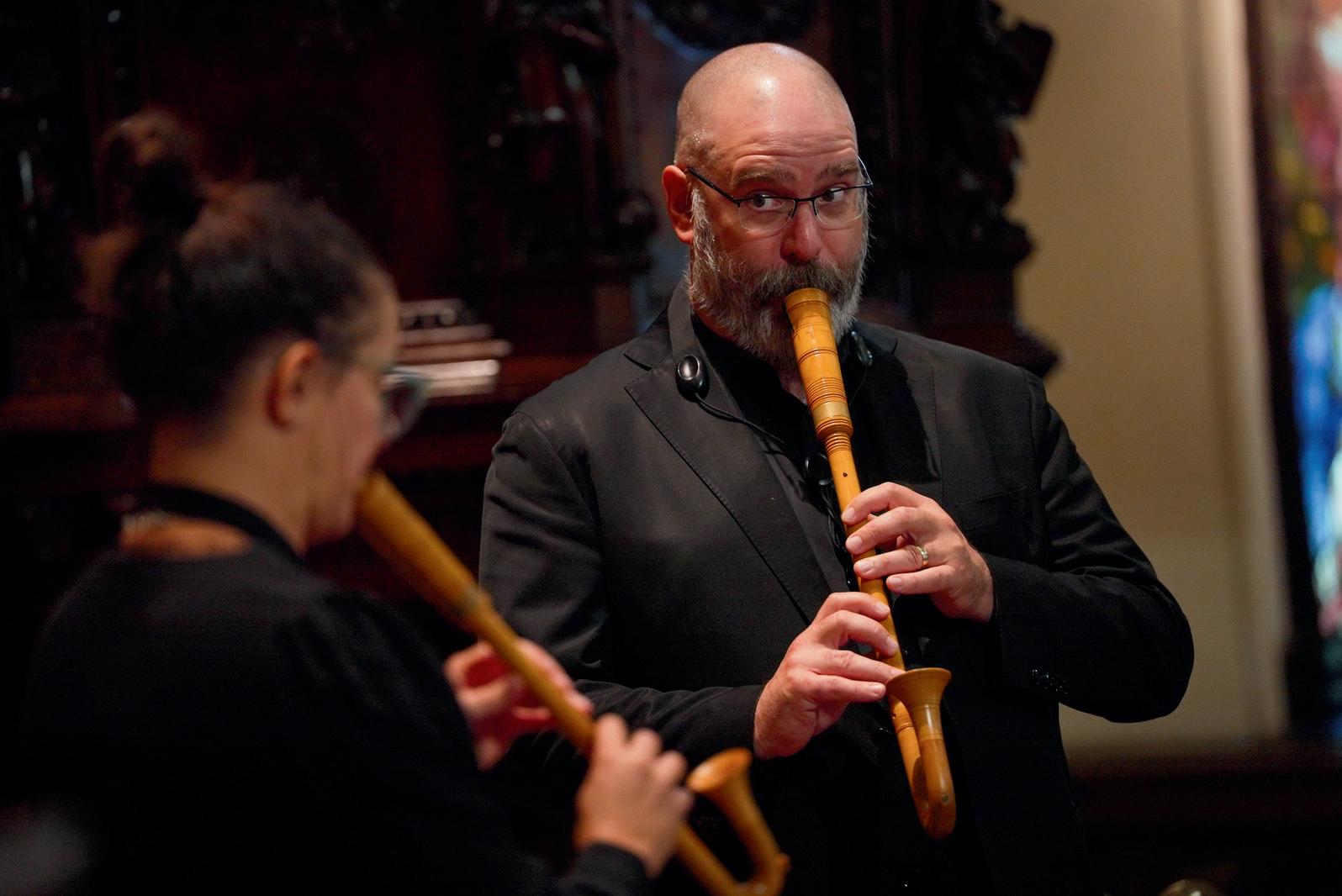

The two Ward children grew up active, smart, and precocious. Katherine entered first grade a year early, attended public school until ninth grade, and early on displayed a disdain for societal norms: In junior high she tried to enroll in a shop course, but the school didn’t want girls going near all those power tools. She was urged to







take home economics instead.
“Why would I do that?” she says today. “I already knew how to sew and cook.” (She made her own clothes, including her high school graduation dress, and prepared the family’s Thanksgiving dinner when she was 12.)
She and her brother loved the outdoors, and they spent many summer days roaming the fields at their maternal grandparents’ Missouri farm or hiking, fishing, and boating at the family’s lake house in Towanda, Pa.
Ward went on to Tower Hill School, where she excelled academically, and played field hockey and softball (second base, left field), in addition to playing the flute in the band.
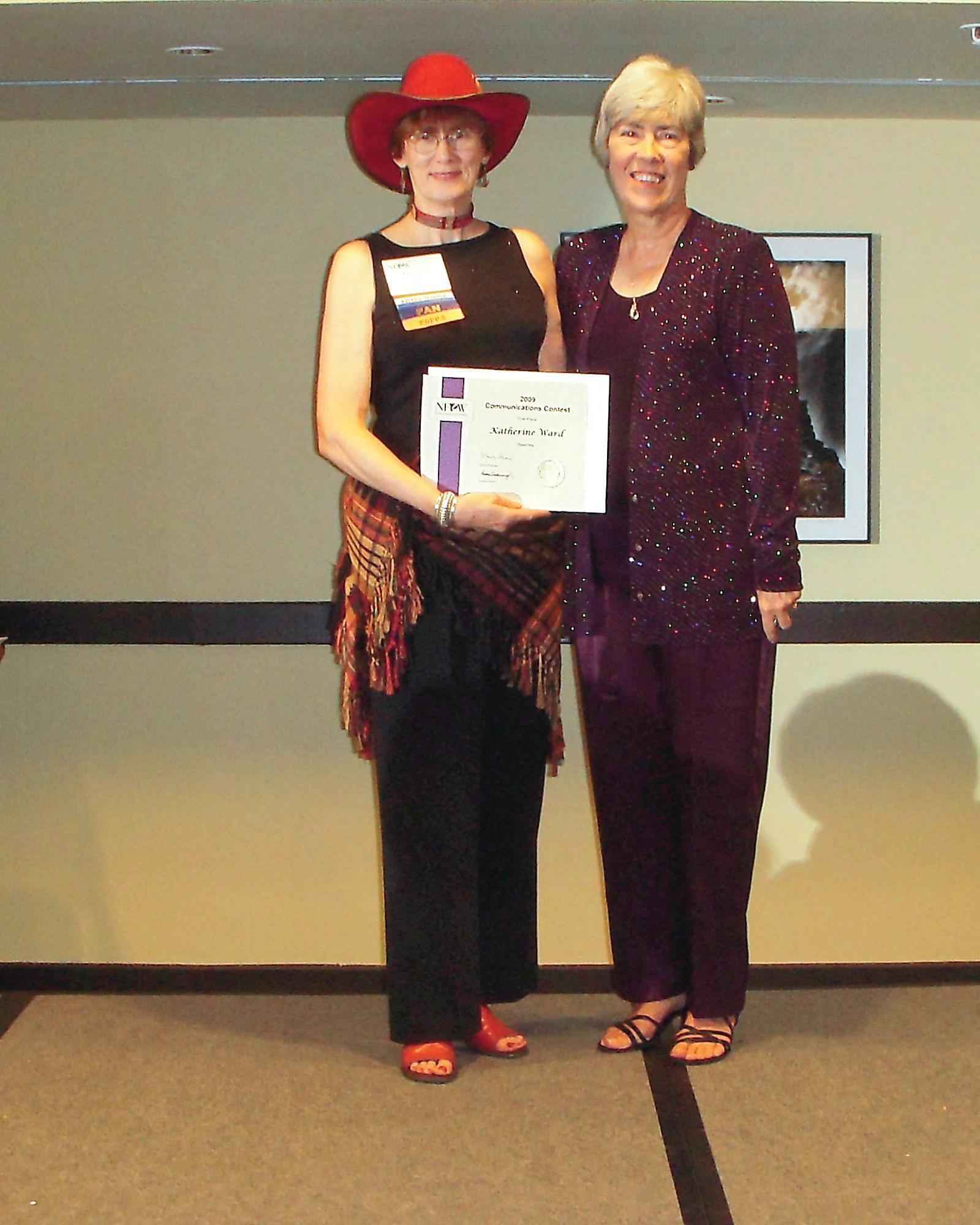
She enrolled at Bucknell University in Lewisburg, Pa., and earned a bachelor’s degree in English and a secondary teaching certificate, meanwhile satisfying her athletic Jones by joining the women’s golf team.
Bucknell Romance
Much like her mother’s assignment to Fort Washington, the move to Lewisburg led to marriage. Jim Smigie, a record-setting co-captain on the Bison swim team, caught Ward’s eye, and vice versa. (“He never lost a meet and he missed qualifying for the Olympic team by four-tenths of a second,” she says proudly.) They got married in June 1966.
Smigie was on active duty with the Coast Guard for a few years, making life a bit peripatetic for the young couple. They moved from Delaware to San Francisco to Boston, where Ward earned a master’s in English and Irish literature from Simmons College. After his Coast Guard stint, Smigie went to work for DuPont, which led to moves to Virginia, Minnesota, and New Jersey before they settled in Wilmington. (In all, Ward has lived in 11 states).
They have two sons, Michael and Steven. A full participant in her boys’ activities, Ward sometimes characteristically ignored gender roles: When no father stepped up to serve as Steven’s Cub Scout pack master, the former Girl Scout summer camp counselor took the job.
In 1989, Mary Sam was diagnosed with Alzheimer’s disease. Ward’s father had died the previous year, so she, Jim, and the boys moved from New Jersey to the house in Westover Hills where she grew up to be her mother’s caregivers. Mary Sam died in 2000, and later that year was honored as one of NFPW’s Women of the Millennium at the Alaska conference.
Ward expanded on her mother’s legacy by not only leading the DPA to national prominence but also engaging in myriad civic and church activities. For several years
she was president of the Prison Arts Advisory Board for the Delaware Department of Correction. As a board member of the Delaware Coalition for Open Government, she helped lead COG’s successful effort to get a bill passed in August creating an Office of the Inspector General for the First State.
She has served as lector and communion assistant at Christ Church Christiana Hundred, and has used her considerable culinary skills to prepare food for the unhoused. She’s the longtime committee chair for the annual Christ Church Green Show — a fundraising event for various Delaware charities.
Professionally, Ward has made her mark as a writer and, especially, as an editor. In the last 25 years, she has edited memoirs, novels, poetry, scholarly works, religious, young adult fiction, and crisis management. Nearly all of them have won state and national awards.
As their editor, she tells writers: “I always will be honest with you: about what I read and about what I think would be helpful in regard to changes. Whatever I say to you is meant only to be helpful, and bottom line, it is your article, story or book, and you are the final arbiter of what is — or is not — to be done.
“Once on the job, I am a grammar nerd but also a ferocious fact checker.”
(Full disclosure: Whenever I’m stumped on a grammar issue, whether for a story or in "The War on Words" column, I consult Katherine, who invariably responds in detail, often with asides about related — or semi-related — subjects.)
One of her editing jobs was the 2006 memoir Write Home for Me by Australian journalist Jean Lamensdorf, who spent a year working for the Australian Red Cross in field hospitals near South Vietnam’s front lines. By the second week of publication the book was number one on the bestseller list in South Australia — with The Da Vinci Code at number eight.
Ward’s three decades as DPA executive director have been marked by many personal highlights, including:
• In 2003, she organized the NFPW’s national conference, which drew several hundred communications professionals to Wilmington. She corralled featured speakers such as former CNN World Affairs correspondent Ralph Begleiter, Emmy Award-winning filmmaker Sharon Kelly Baker of Teleduction in Wilmington, HBO VP Jay Roewe, bestselling Delaware author Julianna Baggott, CBS News White House correspondent Jim Axelrod, and U. S. Sen. Joe Biden. The session is considered the gold standard for NFPW national conferences.
• She was named the 2007 DPA Communicator



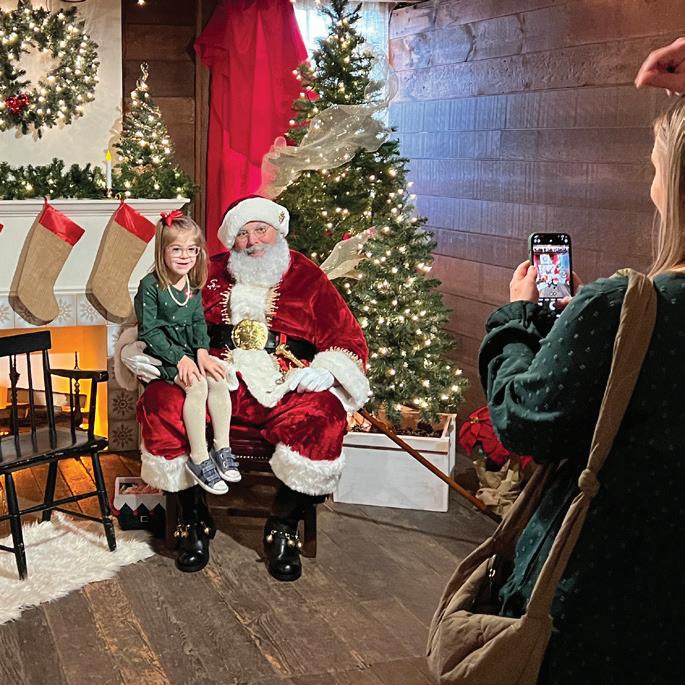


of Achievement, the organization’s highest honor. In accepting the award, she remarked, “What could be cooler than being the 007 DPA Communicator of Achievement!”
• In 2014, Ward received the NFPW’s highest honor, the President’s Award, for exceptional service that included moving the state and national communications contests from a hard-copy format to an all-electronic system. (Unlike many of her contemporaries, Ward has transitioned smoothly from the analog world to the digital.)
Smigie is by her side at most local and national events, and serves as the DPA’s unofficial photographer.
Slim and soft-spoken, Ward projects a gentle mien, and her many hobbies reflect that nature — to a point. She likes to garden, knit, sew, and cook — her 10-bean soup is the stuff of legend at DPA and Christ Church events.
But some of her interests are a bit disparate from those quiet pastimes. She played organized softball for many years before, to quote her, “hanging up my spikes” at 40. She likes to hike, and she played golf until a few years ago.
True to her agrarian heritage, Ward is handy with tools, and says, half-seriously, “I was born to be a carpenter; my favorite Christmas present was a radial arm saw.” In several of the houses she and Smigie have owned, she has added crown molding, chair rail and door trim.
She insists she is in no way a musician, but she can still play the flute, as well as the organ that sits in her Westover Hills dining room.
Her preferred instrument, though, is the harmonica, which she mastered when she was a youngster. She owns several and usually breaks out her favorite during the Christmas holidays. Karen Jessee, a long-time friend and DPA member, recalls that, one Christmas, after their gift exchange, “As we were leaving her house, Katherine came
Katherine’s observations and insights come wrapped in collegial warmth, humor and the kind of wisdom and savvy gained by experience. She is a skillful, intelligent coach, sharing her goodness, knowledge, and joy of living in a world that needs exactly those things. I love her, I do!
— Beth Miller, former News Journal reporter, now science writer at the University of Delaware

Katherine Ward has made immense contributions to journalism in the State of Delaware. Long into the future, the work of journalists will benefit from Katherine’s work with the Delaware Coalition for Open Government. She can spot a Freedom of Information Act violation or a First Amendment infringement a mile away.
— Mark Fowser, news reporter and anchor, WDEL AM
Katherine has been the backbone of the Delaware Press Association for as long as I can remember. Her work to bring journalists together — to learn, to collaborate and to work in service to the community — is an inspiration.
— Allison Levine, publisher and CEO, Spotlight Delaware
Katherine has given her time, talent, and energy to the DPA and its events, particularly the communications contest. She’s turned a demanding process into something thoughtful and inspiring, honoring not just the craft of journalism but the people behind it. Her care and dedication have strengthened our work and lifted our community.
— Maria Hess, assistant vice president of Executive Communications at Wilmington University, and former editorin-chief of Delaware Today Magazine

Four local organizations that reflect the best in us

Sean’s House, West End Neighborhood House, Lasagna Love and One Village Alliance are small organizations doing big things in our community. To find out how, read on . . .
from
volunteer chef
of One Village Alliance. Volunteers wrap gifts for West End Neighborhood House’s Life Lines program. Students on the steps of Sean's House. Photosprovided


Sean’s House ensures that anyone struggling with a mental health crisis can walk in and find help — day or night
By Andrea Smith
At Sean’s House in Newark, a light is always on. During the day, people come and go through the bright blue front door and find free food, hot coffee, cozy couches, and a compassionate community inside. At night, it’s quieter, but still welcoming to anyone in need of a listening ear.
The house at 136 W. Main St. had an open-door policy and a lights-always-on reputation long before it became a public wellness hub. About 10 years ago, it was the typical college guys’ house, just steps away from the University of Delaware campus, where students tossed backpacks onto the couch, laughed in the halls, and threw parties on the weekends. Today, in honor of former tenant Sean Locke, it serves as a home-away-from-home to anyone battling mental illness, particularly those ages 14 to 24.
Sean Locke died by suicide on July 18, 2018, weeks before his 24th birthday, shocking his family and friends. He was a homecoming king, star basketball player, beloved son, brother, and friend who appeared to be happy. He hid his anxiety and depression well.
“He never could verbalize what he was going through for a litany of reasons,” Sean’s father Chris Locke says. “When people deal with mental illness, sometimes that voice is really hard to find. Sean’s House is a place for them to find that voice … to not suffer in silence anymore and to speak up, and then [get] the help they need.”
The Locke family and friends hosted a basketball event seven months after Sean’s death to raise money for a national mental health resource, but the tremendous outpouring of support indicated an eagerness for more local mental health resources. The SL24: UnLocke the Light Foundation formed as a result and eventually opened Sean’s House in 2020.
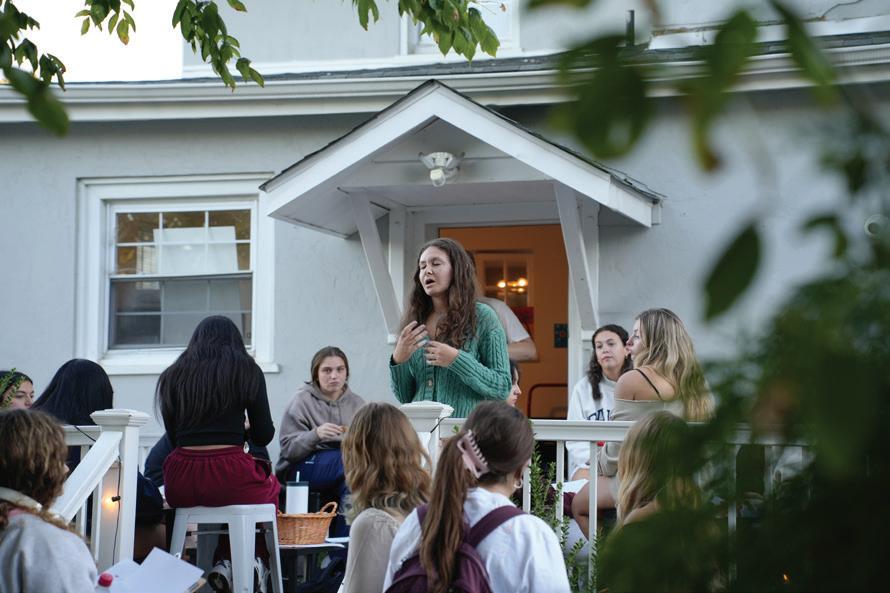
In five years, Sean's House has welcomed more than 42,000 young people looking to make a connection.
The office of the U.S. surgeon general has reported “significant increases in certain mental health disorders in youth, including depression, anxiety, and suicidal ideation,” particularly in the years after the pandemic. In 2023, suicide was the second-leading cause of death among people ages 10 to 34 and remains a major public health concern, according to the National Institute of Mental Health.
SL24 continues to host fundraisers that spread awareness of mental illnesses and destigmatize treatment, plus it pushes for legislation that expands mental health resources across Delaware. The house provides a safe haven for 24/7 crisis intervention and preventative care through its free amenities, library of self-care books and resource pamphlets, information about professional health care providers, and a calendar of programs. Just last month, The Garage opened in the driveway of Sean’s House to offer an additional wellness space designed to host yoga classes, support groups, and other events.
“The No. 1 preventative factor against suicide is connection, so that's what you can find here,” Sean’s House Director Angela Pugliese says. “Whether it’s in the general space or whether it's a PAWS for People dog, you're finding a connection. It is not meant to replace therapy.”
Sean’s House equips students to address others’ mental health challenges through its Peer24 Training program. Peer leads are tasked with assessing the needs of anyone who walks in and offering them a
FBy Ken Mammarella
or more than 20 years, West End Neighborhood House has hosted a Thanksgiving dinner for people it has helped through Life Lines, its program for current and former foster care youth, homeless youth, and those who identify as LGBTQ+.
The dinner is more than a meal.
“I feel a sense of community with both the managers as well as the residents within the program,” says LeVon Jackson, who attended his first West End Thanksgiving dinner in 2019 and has been a regular since. “It’s a great way to end up learning about people who I live near.”
“We have young people who never had a home, who might have been in 17 placements,” says Paul Calistro, the Wilmington nonprofit’s executive director. “They think of this as coming home and bring their children. They feel safe and comfortable. It’s a tradition.”
The organization, founded in 1883, has multiple programs that build communities in multiple ways. For example, “we still start community gardens to get people together, not just to feed them,” he says.
And about every month it celebrates communities.
A college reveal celebrates success. It’s a dinner where young people who have been helped through West End talk about where they’ve been accepted to college. “All the younger kids watching it get excited about education,” Calistro says.
Calistro likes to call the people that his agency helps, because they deserve good customer service) and another for customers of its Education & Employment program.
Several programs celebrate the holidays by uniting multiple communities.

Cornerstone West Community Development Corp., a sister agency, hosts events like block parties that celebrate place.
And “Twice a year, we celebrate the graduation of students that have started their own businesses through our Launcher program,” he says. That’s about 250 people annually.
West End actually hosts two Thanksgiving dinners, one for Life Lines customers (that’s what
In 2024, 500 households (1,800 people) received full Thanksgiving baskets. Distribution involves Hilltop Lutheran Community Center, Rosehill Community Center, Rodney Street Tennis, Good Shepherd Baptist Church, Catholic Charities, Cornerstone West, Life Lines and Seeds of Jesus. Supporters include the Food Bank of Delaware, Wegmans, ShopRite/Kenny Family Foundation, T-Mobile, Winner Automotive, Caesar Rodney Rotary Club and new this year Dot Foods Charitable.
Seventy to 80 volunteers help on distribution day. Many are regulars, but there’s always space for newcomers, development director Greg Munson says. Some regulars have turned this charitable event into a family tradition by involving their children and grandchildren.
West End runs two Adopt-a-Family programs, connecting community and corporate supporters with families to ensure that 500 children “experience the joy of the season,” according to Munson. Top supporters include the Power for Good Foundation, Capital One, Chase, CSC Station and Barclays.
Local individuals and businesses also support
With kindness baked into every tray, Lasagna Love nourishes neighbors in need
LBy Mary Ellen Mitchell
asagna Love is an international nonprofit organization that arose from a simple idea in the spring of 2020 during the COVID-19 pandemic. Rhiannon Menn, a San Diego resident, realized that some of her neighbors needed help with meal provisions during quarantine. She responded by delivering her homemade culinary creations, including lasagna, which quickly became everyone’s favorite comfort food.
Soon friends and neighbors began to join Menn in the kitchen, and the concept of neighbor helping neighbor through warm and bubbly layers of gooey goodwill grew exponentially in the years that followed.
Today Lasagna Love is a full-fledged nonprofit, with 80,000 volunteers across the globe — aptly called “chefs” — who feed families, spread kindness, and strengthen communities.
Chefs make each lasagna to order, using ingredients they procure and purchase with their own money. They can use the organization’s recipe, their own, or often one passed down through family for generations.
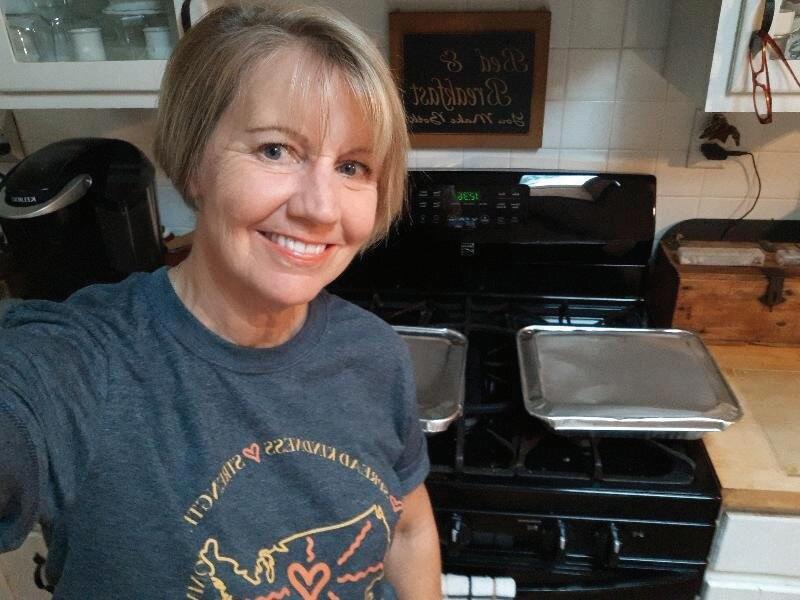
Chefs have flexibility in their choices, too. They decide how often to bake, how many trays to bake per day, and how far they’re willing to drive to deliver. Lasagna Love trains chefs on topics such as food safety and handling through an online portal, where they also receive baking and delivery assignments from volunteers known as “Local Leaders.”
Since the fall of 2020, when the first Delawarean volunteered, 500 Lasagna Love chefs have baked and delivered over 5,100 lasagnas in the First Sate, and they’re just warming up.
Anyone in need can request a lasagna through a simple form on the organization’s website, with no rationale required.
To ensure satisfaction, chefs text recipients to inquire about personal preferences or dietary restrictions before starting. While most recipients ask that their lasagna be delivered warm and fresh from the oven, some want it frozen, or sometimes — unbaked. Delivery time is also finalized by text.
As straightforward as this process seems, the idea of asking for help can feel uncomfortable for many, and some may not be able to greet their chef. So, to give recipients a choice in their preference for interaction, chefs text upon arrival, and if they’re asked to leave the lasagna at the door, it’s never been an issue.
“There are a million reasons someone may request a lasagna, but we don’t ask why, and we don’t judge,” says Delaware’s local leader, Lea Cassarino, who is retired from her career as a public health program manager for the state of New York. While managing and coordinating with every Delaware chef, Cassarino is also a chef herself, which is how she started with the organization.
Lasagna recipients aren’t always at the bottom of the economic ladder. New Castle County resident and chef Jan Van Valkenburg says she has delivered to families living in run-down
confidential support session.
“Peer support is about sharing based on your own experiences,” describes Carolyn Ulsh, a peer lead and UD psychology student. “It’s an opportunity to say, ‘Hey, I’m listening to you. I want to hear what you have to say.’ Or if you just want someone to sit with you, we’re all here and want to help.”
In five years, Sean’s House has welcomed 42,000 visitors, hosted 4,800 peer support sessions, and addressed 173 active mental health crises. SL24 also serves Delaware teens through Sean’s Rooms, which offer an environment inside high schools similar to Sean’s House.
“The statistics prove that this is a concept that can
the Thanksgiving baskets and Adopt-a-Family.
A youth workforce development program called Bright Spot Urban Farm celebrates the season by selling a few thousand poinsettias each year, in addition to training 22 people in horticulture, greenhouse operations, customer service and business management.
Some people who once received Thanksgiving baskets and Adopt-a-Family gifts pay it forward by volunteering with these programs, Calistro said.
People who have been helped in other ways feel a
work,” Chris Locke says. “This is a concept that the community wants and needs, and none of it’s possible without their support.”
“Loss still does happen. [We offer] a space where we can say, ‘We got your back. We will walk with you through these really dark moments,’” Pugliese says. “We are very intentional about always having our lights on in front of the house to be a beacon of light in the community, literally and figuratively.”
To talk with someone about suicidal thoughts or concern for another person, call or text the 24/7 National Suicide & Crisis Lifeline using 988. In Delaware, youth crisis support is available at 800-969-4357.
motels, but also to houses larger and subjectively nicer than her own.
“We just never know what people are going through,” she says. “Maybe they’re having mental health or personal issues, or they’re sick or recovering from surgery. It’s a privilege to help them, regardless.”
Cassarino sums up Lasagna Love’s mission: “To
similar call to help. Recently, a middle-aged woman showed up West End and identified herself as its second foster care child.
“She said, ‘I came here to see what my old home looked like and to be inspired,’” Calistro recalls. “‘I’m going to build one in Baltimore, because this place changed and saved my life.’”
For more on the organization’s program, visit WestEndNH.org
show neighbors that people care for them, nourishing not only the body, but just as importantly, the heart.”
For more information, visit LasagnaLove.org
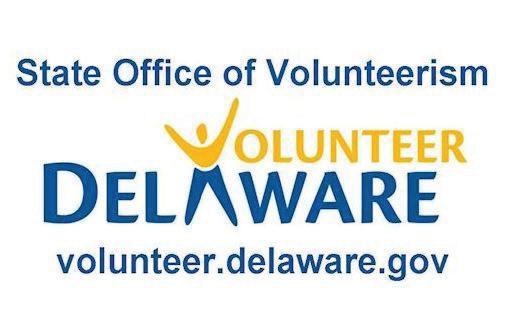
A vision turns 15 and expands to help the community thrive
CBy Michelle Kramer-Fitzgerald
handra Pitts, President and CEO of One Village Alliance, is a woman leading a tireless mission for our community. She launched the One Village Alliance (OVA) with the vision of “one village of healthy children, strong families, and thriving communities.” Her goal: To address the pervasive sense of division and hopelessness — “generational curses,” as she notes — that have become the all-too-common narrative for historically marginalized children and families.
“My goal is to inspire children, make them feel valued, tell them of their true greatness,” Pitts says. “Then provide the resources and support to help them achieve [that].”
In July of this year, the OVA organization marked its 15th anniversary, commemorated by the purchase of a full city block to be transformed into a communal space promoting health, wellness, entrepreneurship, and vibrancy. That event also unveiled an outdoor greenspace intended to create a place for community gathering, healing, and wellbeing.
“I’m blown away by the impact we’ve been able to make — to bridge the gaps, provide vital support, and promote real life connections,” Pitts says.
life experiences as a first-generation MexicanAmerican-Black woman and a single mother raising a son,” Pitts says.
In her journey, it is perhaps not surprising that another program closest to Pitts’ heart is Raising Kings. “It’s a scaled-up model of the approach I took to raise my son,” she says.
The Kings program engages men, mentors, and other community members who help to shift the image, expectations, and outcomes for men and boys of color.

From food to fun, One Village Alliance provides a variety of programs to strengthen the community.
One of the signature programs of OVA is its annual Girls Can Do Anything! conference, which recently celebrated sold-out attendance at its October 25 event. The conference aims to redefine womanhood and what it means to be a girl; promote goal achievement through education, empowerment, and vision; and inspire the next generation of powerful young women.
“Our work is so relevant, so culturally informed, and so impactful because it comes from my own
Red Clay School District Superintendent Dr. Dorrell Green currently serves as the event Chair. Numerous Black entrepreneurs, physicians, attorneys, and educators participate annually to share stories of their successes and connect with community youth. And the impact is evident — Pitts notes there are men who participated as youth and still maintain connections with their Raising Kings mentors.
Other programs, such as Freedom Mondays, incorporate free haircuts, health screenings, and family book clubs. OVA also aims to combat the Northeast Corridor’s food desert challenges with staples provided by its Fresh Food Fridays — free CSA/pantry-style pickups of produce, baked goods, and meats provided by local businesses. >

To do this work requires not only a holistic approach but also support from the entire community. Along with hundreds of volunteers, OVA’s wide-ranging partnerships include Red Clay Consolidated School District, Delaware Health Equity Coalition, Amerihealth Caritas, Welfare Foundation, Crestlea Foundation, WSFS Foundation, Delaware Humanities, and the Delaware Division of the Arts. Local business owners — including those of Concord Mall's Chick-Fil-A and several Wilmington-area barbershops — also generously bolster OVA’s programming efforts.
One of the organization’s most noteworthy achievements will be the launch of its OVA Freedom Center, which will be celebrated with a grand opening event on Tuesday, November 11. The block-long campus, located at 31 W. 31st Street, stands as Delaware’s first community-based urban wellness center.
The over 15,000-square-foot interior encompasses studio, classroom, and co-working spaces; a rentable indoor and outdoor event space; a licensed commercial kitchen, as well as the aforementioned urban greenspace. Within its walls, OVA will not only offer support for burgeoning entrepreneurs but also provide residents of Wilmington’s Northside access to 24/7 preventive and wellness services at no cost, with the goal of reducing health inequality and expanding education and awareness.
“Now, those same founding funders [from our July event] get to see what their philanthropic investment has created, and new donors will be invited to join us, broadening our impact,” says Pitts.
— To learn more about, support, and volunteer with One Village Alliance, visit IAmTheVillage.org.













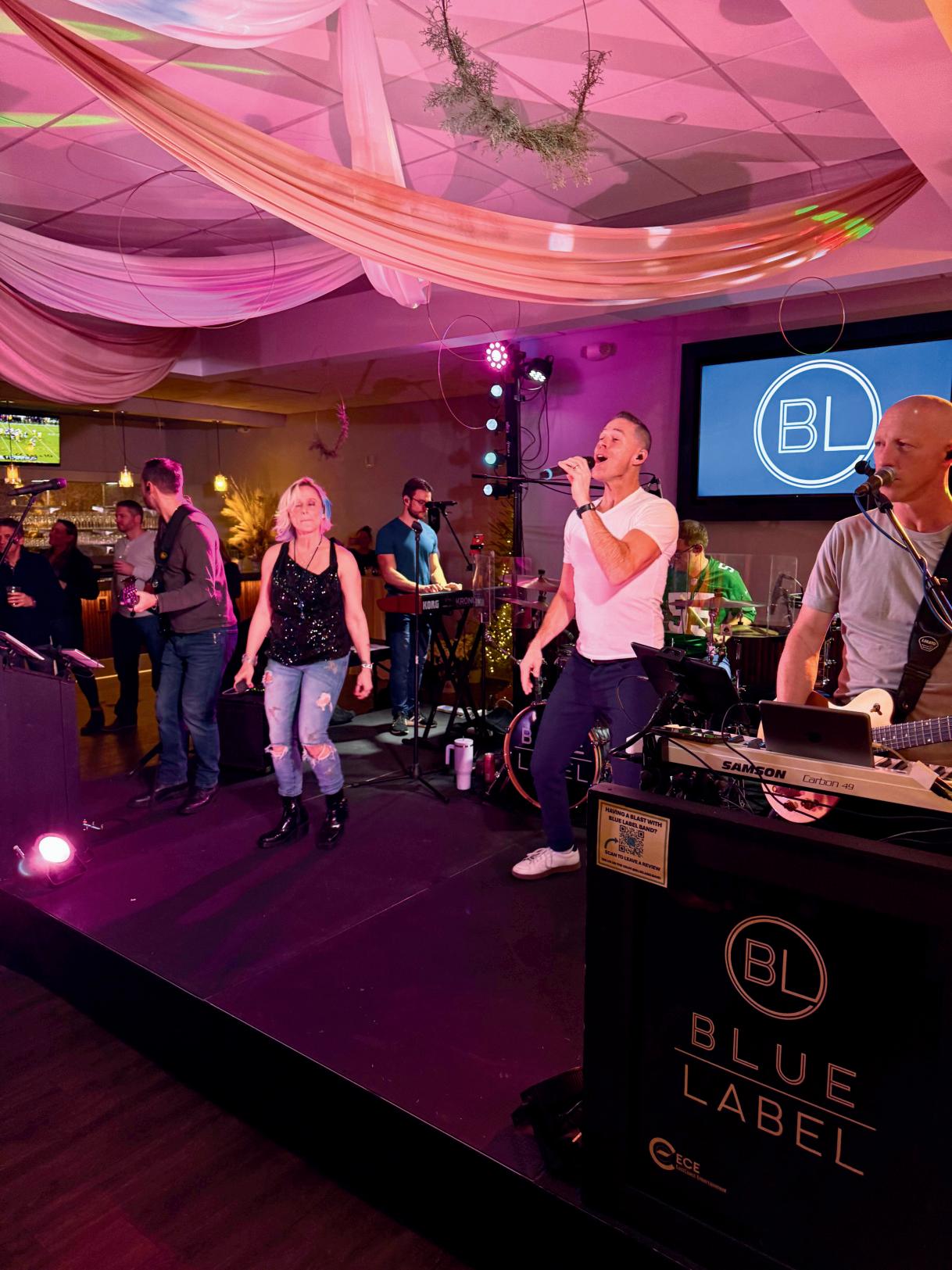

Dennis Buckley’s devotion to the du Ponts, a dream, and a white house created a thoroughly Delaware landmark
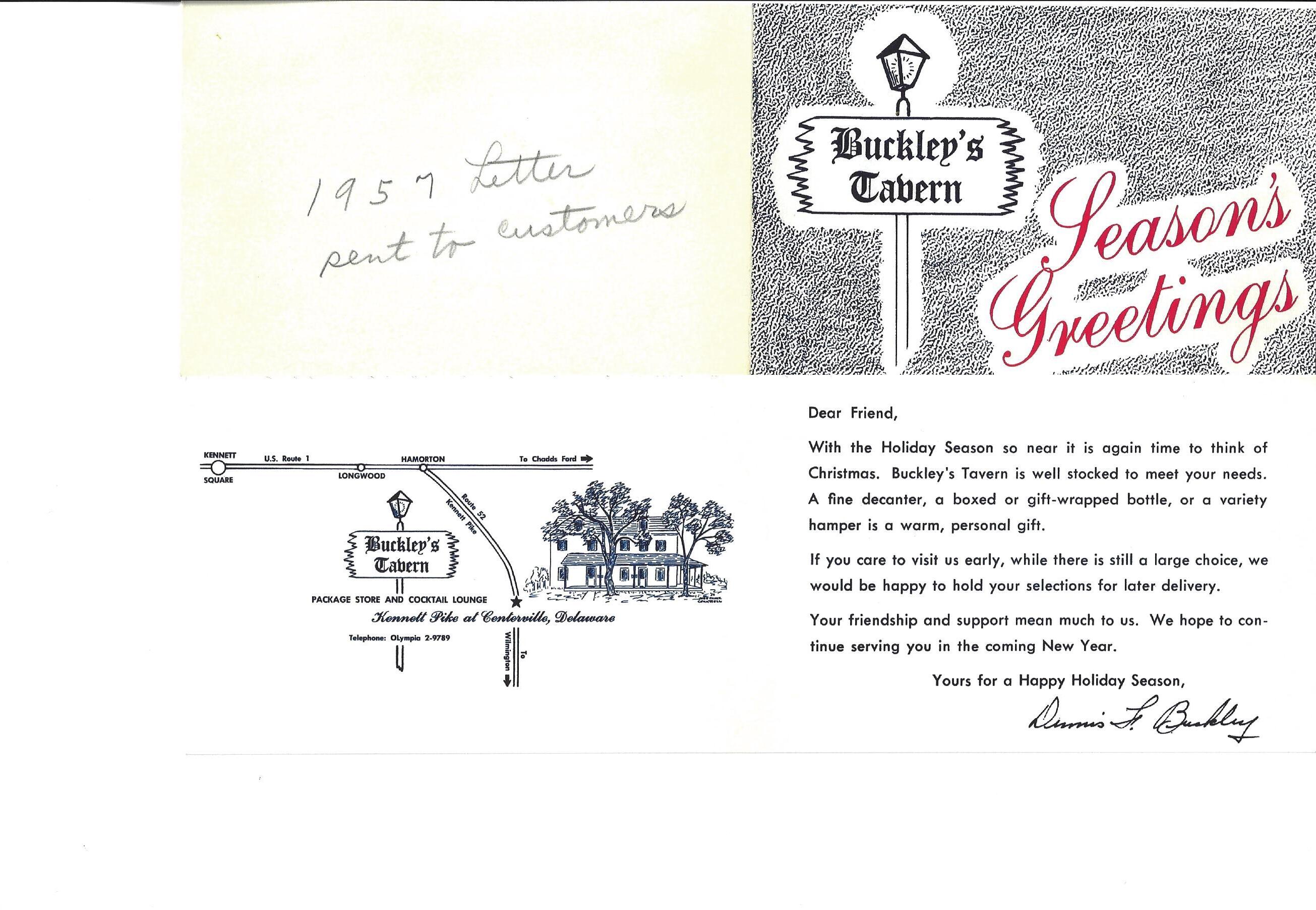


For nearly 75 years, the white house that hugs Kennett Pike in Centreville has been Buckley’s Tavern, a name that remained after an ownership change. But unless you bellied up to the bar in the mid-to-late 20th century, you probably didn’t know the tavern’s namesake.
Dennis Buckley is now getting his due. A new plaque in the restaurant includes his photograph and a few paragraphs about him. “Dennis’s legacy extends beyond the walls of the tavern,” according to the text. “It will undoubtedly continue to thrive in the hearts of all who knew him.”
So, who was the man who created one of Delaware’s most popular public houses? The Delaware native had humble beginnings but rubbed elbows with Wilmington royalty. In short, he personified the Buckley’s tradition of blending bluebloods with blue collars.



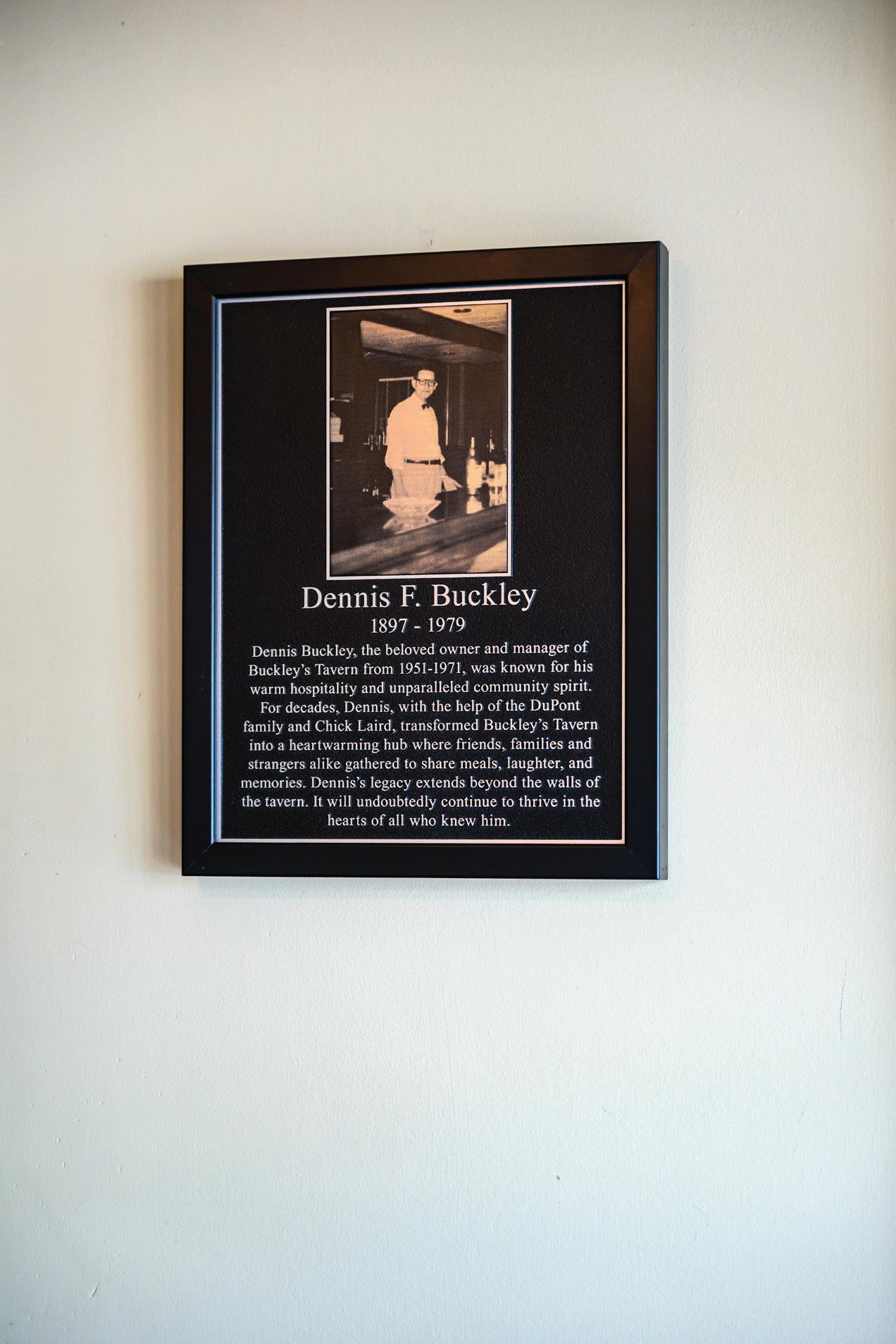
explosion in 1863.)
William died in 1899, and Sarah never remarried, according to Dennis Buckley’s oral history for the Hagley Museum & Library. She worked for Alfred I. du Pont and his wife, Elizabeth “Bessie” G. du Pont, while caring for her own children: William, Joseph, Dennis, and Helen.
Buckley attended St. Joseph’s on the Brandywine School alongside the sons and daughters of powdermen. “We all belonged to the DuPont Co. at that time, you might say — all worked for the DuPont Co., all their fathers, and mothers who worked,” he recalled in 1975.
The Buckley family benefitted from du Pont generosity: Alfred I. paid the rent or bought them potatoes, and P.S. du Pont also paid the rent and gave the children Christmas presents. Buckley’s sister, Helen, cared for the children of William Winder Laird Sr. and Mary Alletta du Pont, including their son, William Winder “Chick” Laird Jr., who would become Buckley’s lifelong friend and benefactor.
The Alexis I. du Pont High School graduate was ambitious. He worked in a barber shop until he landed an interview with Ferdinand Lammot of the DuPont Co., head of the mailroom in the DuPont Building.
After marrying Frances Coale, a local girl, in 1918, Buckley persuaded his friend, Rodney Sharp, to transfer him to the Carney’s Point plant, where he clerked and monitored the smokeless powder as it “cooked.”
“We, like dummies, used to jump down into that big vat and didn’t realize the danger,” he said. The mammoth
vats of powder occasionally blew up.
Laird Sr., vice president of Diamond Ice & Coal, helped Buckley secure a sales job. He thrived. “I don’t want to blow my horn, but I was the best salesman outside of the sales manager in the Diamond Ice and Coal Co., and we had about 10 or 12 salesmen,” Buckley said.
“I won every contest we had, and we had contests after contests and the most oil to be sold, I would sell it. I had [clients] like the Winterthur Farms, Harry du Pont, and Hallock du Pont, Mrs. B.G. du Pont, all the Kennett Pike, Westover Hills, and

Buckley and Frances had three children: Donald, Alyn and Eugenia Marie, who married James Francis Wachter in 1941. When Eugenia died seven years later at the age of 29, the Buckleys moved in with their son-in-law to care for the three children: Judith, 6, Geraldine, 3, and 10-month-old James Jr. At the time, Wachter was the proprietor of Wachter’s Tally-Ho Tavern at Concord Pike and Naamans Road. (There was no motel then.)
The family lived above the tavern, and Buckley managed the tavern’s liquor store.
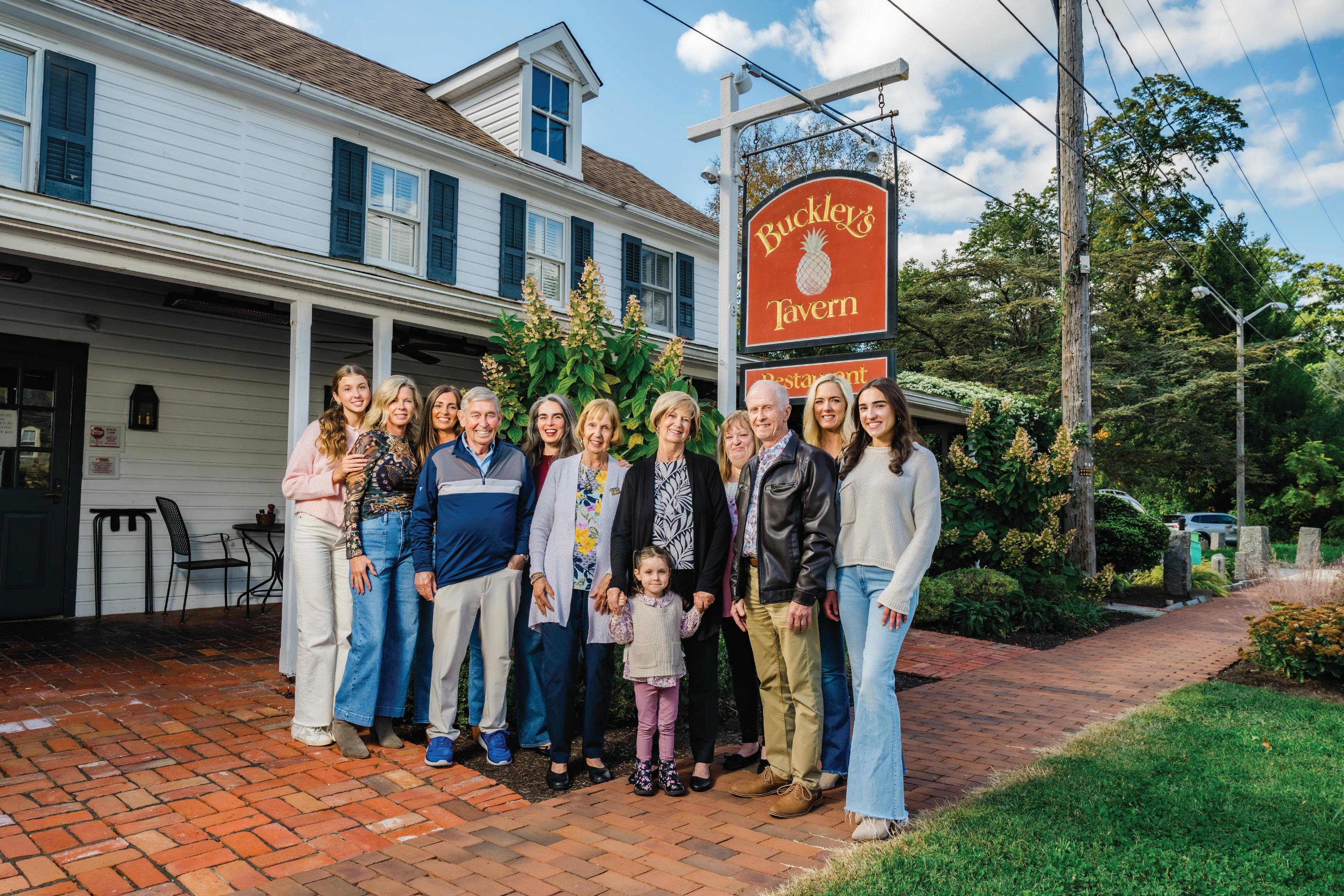
Buckley expressed an interest in owning a liquor business. “Mr. Laird said, ‘Well, you get a place, and I’ll back you,’“ Buckley said for the oral history.
He set his sights on Ted Antoine’s tavern, Antoine’s. “He wasn’t doing anything with it. It was dirty, looked like a garage — it was a garage at times,” Buckley recalled. “So, we talked to him, and he let me have it.”
Built in 1817, the structure had been a private residence and stagecoach stop. At one point, you could buy liquor and ice cream. Antoine, a racehorse trainer, also owned the town’s only gas station.
Laird invested $100,000 in the building, but improvements were needed.
“We had no water because the water had gasoline mixed in with it from the garage; the tanks leaked and … got into the wells,” Buckley said.
Deeper wells didn’t solve the problem. “We had beautiful toilets there for the men and the women, and the rust and the oil and everything disfigured it.” He had to buy water.
In 1952, an ad in the Journal-Every Evening announced the new business. “Dennis Buckley invites you to join the hospitality of Buckley’s Tavern,” it read. “Choice Beverages. Mixed Drinks.” The menu was simple — cold sandwiches, says Geraldine “Geri” Wachter Bilinski, who called Buckley “Pop Pop Dennis.” Her brother remembers stuffed tomatoes were the specialty.
“It was clean and comfortable with dimmed lighting,” says Dennis Buckley, the grandson.
The Buckleys lived above the business. “Mr. Laird had it fixed awfully nice. We had a beautiful place there,” he said. Frances crocheted afghans in the cozy living room in the front. The second floor also had a kitchen and office.
A 1956 Wilmington Flower Market supplement ad shows Buckley in a crisp button-down shirt and tie, selling bourbon to two happy customers. “My grandfather had a reputation of being well-liked, friendly, and easy to talk to,” Bilinski says.
Her sister, Judith “Judy” Wachter Giunta, agrees. “He greeted his guests with warmth and hospitality,” she says. He also knew his wine and spirits — domestic or imported, she adds.
The grandchildren loved visiting their grandparents. Jim Wachter remembers the small second-floor patio, which had a goldfish pond. One day, while cleaning out leaves from the pond, he looked down into a sink and saw a woman’s head.
“The glass pond was over the ladies’ bathroom!” he says. Indeed, a 1961 article in the Evening Journal described the tavern as “a plush barroom within a colonial frame,” which featured the only ladies’ room in Delaware with a fishpond in its ceiling.
Buckley and son, Alyn, ran the business, and Donald helped part time. He eventually moved to Illinois. In 1967, Buckley retired to care for Frances, whose health was declining. Alyn took over, and when Jim Wachter left the

service in 1969, he helped in the package store.
Centreville was still rural, and when robbers targeted Wilmington liquor stores — likely in 1969 — Buckley kept watch until 4 a.m. from his second-floor window.
One night, a man tried the door and cursed when he found it locked.
“What do you want?” Buckley called from his lookout post, hidden behind trees. “I want to get in,” the man replied. Buckley told him the tavern was closed. The man paused. “Where are you? Up in that tree?” Buckley said yes. “That’s a helluva place to be at this time of night,” the man replied and left.
When the Buckleys moved out, the tavern’s second floor became overflow seating. The crowds were at lunch; taprooms did not serve dinner. To secure a restaurant license, the tavern began serving two meals daily. But running the business was costly.
“Taxes were high, insurance was high, help was high,” Buckley said. “We didn’t make much money—just paid our bills, and it was a great thing to do, pay your bills.”
It was also hard work. Buckley acknowledged that he needed “some spirits” to take the edge off. “It would have killed me, I know,” he said of continuing in the business. “I would have been gone a long time ago.”
Laird decided to sell, and Alyn raised close to the asking price, but not enough, Jim Wachter says. R.H. “Bob” Bolling Jr. and Robert “Bob” Applegate purchased the building in 1970.
“We heard it was for sale, and we weren’t really interested in buying it, but in keeping it like it is,” they told The News Journal in 1974. They wanted to preserve the landmark.
Alyn opened the Candlelight Room in The Devon, where he lived. It operated Tuesday through Saturday for lunch, light dinner, and cocktails. The new owners felt that Jim Wachter was too young — 22 — to manage the establishment.
Chef David Weir operated Buckley’s Tavern for more than 20 years until 2012, when his lease wasn’t renewed. Hotel du Pont alum Tom Hannum, LabWare CEO Vance Kershner, and P. Coleman “Coley” du Pont took over, restoring and reviving the landmark.
In retirement, Dennis, Frances, and their caregiver settled into the North Bancroft Parkway home that Chick Laird gave them.
“I consider him a friend of mine, more than any friends on my own level,” Buckley told his interviewer. “We go out to different places at different times for lunch and chew over the old fat, as he used to call it.” Laird never let Buckley pay for lunch, although he offered.
Giunta took her grandfather on trips to New York, but by the time he gave his oral history, he was more comfortable at home. He stopped going to St. Joseph on the Brandywine Church because it was easier to walk to St. Anthony of Padua.
Frances died in 1974, and their son, Donald, died in >
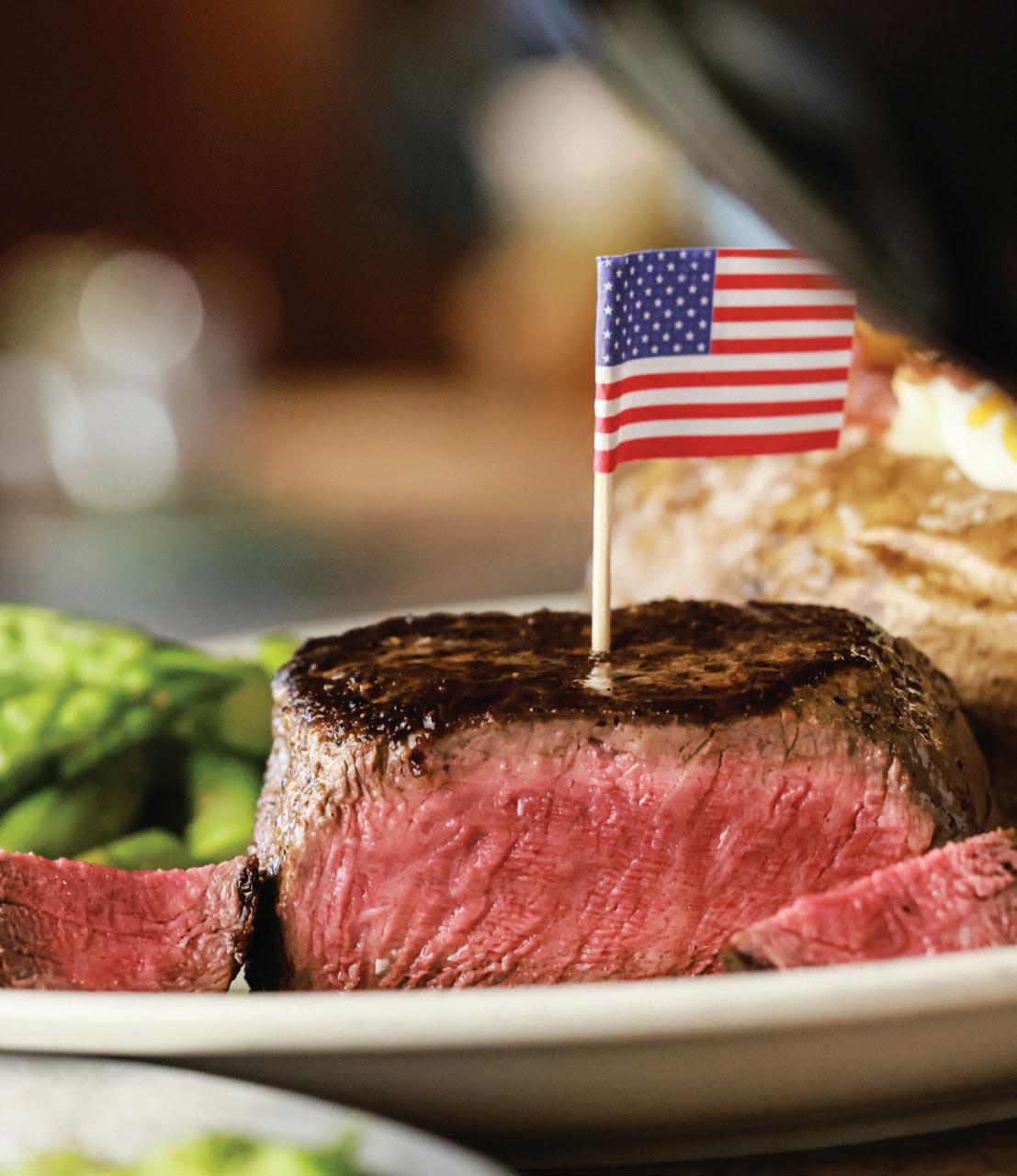


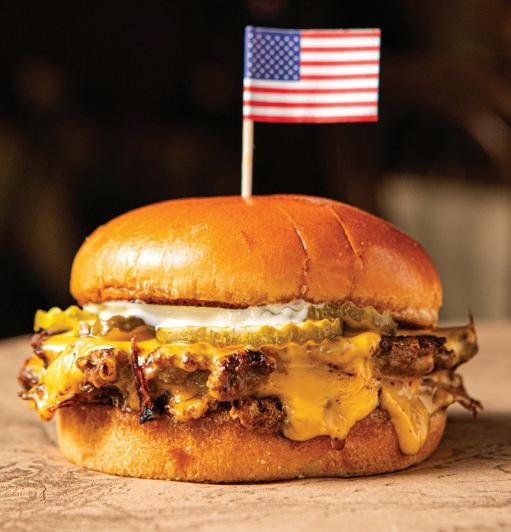








Our attention to detail is evident in everything we do –from fresh seafood, premium hand-cut steaks, gourmet burgers and a larger selection of bison dishes than any other restaurant. We pride ourselves on delivering American dining the way it was meant to be enjoyed. Join us for Happy Hour, Monday-Friday 4:00-6:00pm







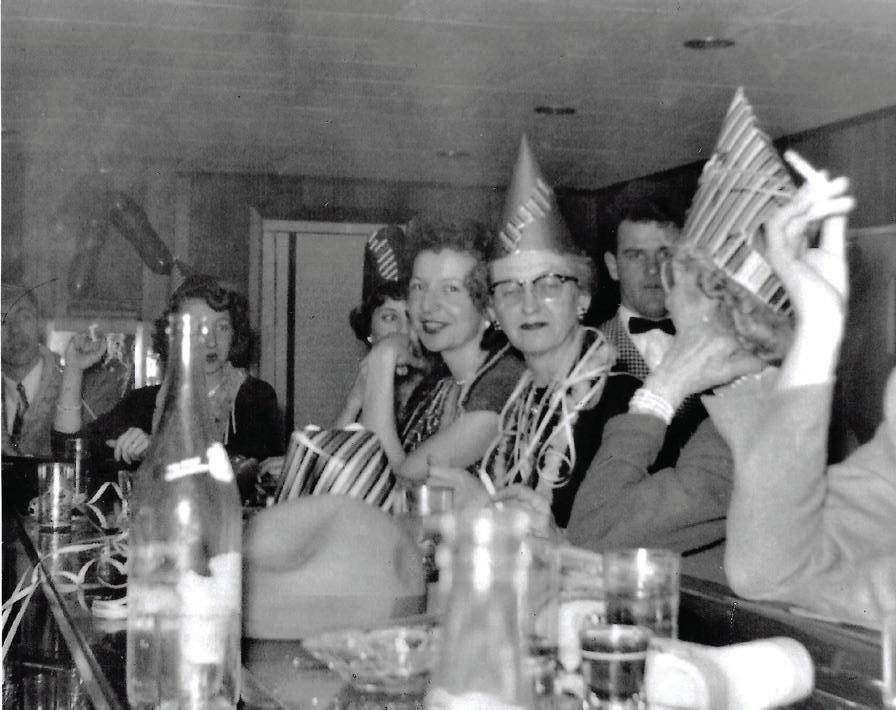
1979 at the age of 50. “I remember Pop Pop Dennis crying, and he said, ‘My son is not supposed to pass away before me,’“ Wachter says.
Wachter visited his grandfather every few weeks, and there was always candy for the children.
Stephanie Emmi, Buckley’s greatgranddaughter, called him “Old Pop Pop,” and she remembers the distinctive aroma of his pipe.
Buckley died in 1979 at 81. At the time, he was survived by Alyn, 13 grandchildren, and eight greatgrandchildren — many of whom still feel connected to the tavern that bears his name.
“It’s a special place for all of us, because we knew it meant so much to our family over the years,” says Emmi, whose daughter works at the restaurant. “We’re very happy it stayed Buckley’s Tavern. I think the name is just so well known, and hopefully it stays Buckley’s. People know it.”
She and her husband were sitting at the bar one day when a couple began asking questions about Buckley’s history. They were delighted to learn they were seated next to the founder’s great-granddaughter.
At the annual reunion, family members decided to commission a plaque to answer some of the questions many patrons raised. In October, the family gathered at Buckley’s to see it mounted on the wall.
“I believe Pop Pop Dennis would have been thrilled to know that the tavern is still a thriving, popular establishment,” Geri Bilinski says.
Buckley’s story, like the tavern that bears his name, continues to bring people together — one toast at a time.








Philadelphia’s famed Angelo’s has officially opened inside DE.CO Food Hall in downtown Wilmington (111 W. 10th St.), marking a significant addition to the city’s growing dining scene. Known for its cheesesteaks, the new stall serves the same signature creations as the South Philly original — thin-sliced ribeye, melted Cooper Sharp cheese, and house-baked seeded rolls.
The October 21 grand opening drew hundreds of cheesesteak fans from across the city, with Mayor John Carney, Bardea Restaurant Group co-owner Scott Stein, and former Philadelphia Eagle Hugh Douglas among those celebrating the Philly landmark’s arrival in Delaware. Operated in partnership with Bardea Restaurant Group, Angelo’s Wilmington currently offers a limited menu of cheesesteaks, chicken steaks and hoagies, with more sandwiches coming soon. Open Monday–Saturday from 10:30am to 8pm (expanding soon to Sundays), Angelo’s also offers delivery via DoorDash and Uber Eat. —More at DecoWilmington.com
Not offered since 2013, Buried Brew: A Tour of Wilmington’s Forgotten Beer History returns Saturday Nov. 15, from 11am to 3pm. Led by local beer historian and author John Medkeff (Brewing in Delaware), this four-hour coach-andwalking tour of the city’s brewing landmarks explores colonial brewers, beer barons, and the pivotal events that made beer an enduring part of Wilmington’s identity. In addition to the tour, the event includes a stop at Wilmington Brew Works with two drink tickets, onboard snacks, and a keepsake program. Tickets are $80, and is limited to 40 participants aged 21 and older. Proceeds support Restore the King, returning the iconic King Gambrinus statue to public view.
— More at RestoreTheKing.com/events


DelaWeAre, Delaware’s statewide craft beer collaboration, returns this fall with a fresh focus on IPAs. Breweries from across the First State will each release their own interpretation of the hop-forward style, showcasing their creativity through a range of flavors, strengths, and colors.
“Last year we brought stouts to the table. This year, we’re giving the people what they want…IPA,” said Jimmy Vennard, President of the Delaware Brewers Guild and Founder of Autumn Arch Beer Project. “I’m eager to see the creativity the Guild members bring to the table this time around.”
Delaware beer lovers can find DelaWeAre IPAs on draft statewide starting the first week of November. Participating breweries include Apothecary Brewing, Autumn Arch Beer Project, Bellefonte Brewing, Big Oyster Brewery, Crooked Hammock Brewery, Dewey Beer Co., Dogfish Head, JAKL Beer Works, Lewes Brewing Company, Volunteer Brewing, and Wilmington Brew Works.
—More at DelawareBrewersGuild.com
Winterthur will host two exclusive wine tasting experiences this holiday season for wine lovers and connoisseurs alike. On November 22, Vine to Glass: A Wine Tasting Experience features Penns Woods Winery’s Davide Creato during Winterthur’s Holiday Market. Guests will enjoy curated Pennsylvania wines at noon, 2pm, and 4pm, while learning about the unique terroir, innovative winemaking techniques, and the stories behind each bottle. This intimate tasting is an add-on available with Holiday Market tickets.
On December 3, An Evening with Silver Oak offers a rare opportunity to taste hand-selected pours of Silver Oak’s renowned American oak–aged Cabernet Sauvignon, including a current release and limited library vintages. Winemaker Laura Oskwarek will share insights into sustainable practices, cellar techniques, and the art of aging Cabernet to perfection. Tasting begins at 6pm and tickets are $175 per person.
— Reservations are required for both events. Visit Winterthur.org



A great American storyteller will share his wit and wisdom on Friday, Nov. 7 at The Grand Opera House for An Evening with Garrison Keillor with Special Guest Rich Dworsky. With Dworsky on keyboard, Keillor will tell stories, recite poetry and limericks, conduct sing-alongs — and report the latest news from Lake Wobegon.
By Mary Ellen Mitchell
Garrison Keillor was born and raised in the small town of Anoka, Minnesota. His career began during his freshman year at the University of Minnesota, where he hosted a show for a student-run radio station to help pay for his education. He graduated with a bachelor’s degree in English in 1966.
Keillor joined Minnesota Public Radio (MPR) in 1969 as a morning show host. He went on to create and host the popular Saturday evening weekly variety show A Prairie Home Companion in 1974 for MPR. The show was a blend of music, comedy and his signature storytelling.
Broadcast from the stage of St. Paul’s Fitzgerald Theater, it featured “The News from Lake Wobegon,” tales of small-town life in the Midwest, told with Keillor’s wry humor and nostalgic flair. The show earned a nationwide following on public radio for more than four decades.
Beyond his accomplishments in radio, Keillor wrote for The New Yorker for more than 20 years, contributing essays and short stories, many of which were later adapted for his show and collected in his books, including Happy to Be Here and We Are Still Married.
He is an accomplished author of dozens more great reads, including Cheerfulness, Lake Wobegon Days, That Time of Year, and The Keillor Reader, to name a few. His
most recent work, Brisk Verse, features witty, philosophical and observational poems, limericks and insights on aging.
Keillor has earned Grammy, ACE, and George Foster Peabody awards, the National Humanities Medal, and a place in the American Academy of Arts and Letters.
Today he reaches listeners and readers through Garrison Keillor and Friends on the Substack app. His Writer’s Almanac offers daily facts and figures for the literary-minded, concluding with a relevant poem. He publishes a biweekly column and produces and hosts Garrison Keillor’s Podcast, which is also available on iHeart, Apple, and Spotify.
O&A spoke with Keillor last month to gain his insights on a variety of topics. Editor’s Note: Keillor uses contractions sparingly in his everyday speech.
O&A: How did your upbringing in the rural Midwest influence your gift for creative storytelling?
Keillor: I don't have a gift, but I did have about 20 aunts. Is that a form of wealth? My Aunt Ruth was the best storyteller, but Eleanor, Elizabeth, Elsie, Margaret, Franny — they all told great stories. For some reason the men did not. The men were rather taciturn, and they walked very delicately when it came to the past. They claimed they couldn’t remember their childhood, but I knew this wasn’t true. The aunts remembered — and they loved to talk about family history.
As a little kid, I would lie on the floor and listen to them talk about our ancestors. We were aware of Elder John Crandall, who came to Boston in 1647 and was arrested for preaching on the city streets, because he was a Baptist. So he went to Rhode Island, and there, he was caught. The grandfather who came over from Glasgow, Scotland, because his stepmother was so censorious about the fact that he got his girlfriend pregnant? He came to America to escape the scandal.
My grandfather from Canada came from Nova Scotia to Minnesota to help out his sister, whose husband was very ill. And when he arrived, his brother-in-law promptly

died of tuberculosis, leaving my grandfather to take care of her three children and a miserable, salty farm where he tried to earn a living from hunting. He stayed there and raised her kids and tried to farm; although, he was not a good farmer. He hitched up his horses and went out to cultivate and plow, with the reins in one hand and a book in the other.
Wow, these stories! They were so, so interesting, and I was completely engrossed.
O&A: Having performed on stage for nearly 50 years, do you still find connection with your audience?
Keillor: Well, I always wanted to do something for people that maybe they could not find elsewhere. Tell stories, recite poems, and do some stand up about old age, which I think of as a comedy. I also would like the audience to have a chance to recall lyrics in their heads that they perhaps have not sung or thought about since they were children. I think we may be the last generation that knows the words.
So, if I stand in front of the audience in Wilmington and sing “My Country `Tis of Thee” or “Amazing Grace” or “The Star-Spangled Banner,” these are songs my audience probably has not sung in a long time. (And they are not there to hear me sing — I'm only singing a little bass part.) But they pick it up, and they're astonished at

how good they sound. They may not remember my jokes, but they will remember that.
O&A: Although many of your stories take place in Lake Wobegon, the universal truths they reveal about human nature seem to have a timeless quality. Is this one of the hallmarks of a great story?
Keillor: The storyteller has to head in the right direction to find out what the story is about. You do not know at the beginning. You begin with faith in the story and the carrot and then come the details and the twist. Of course, a true story is different — then you need to decide what the point of it is.
I think about this: I'm 83 years old. And I am more interested in my childhood and my younger years now than I used to be. I do not think about the future at all. And I do not think about the middle of my life. I went through decades when I was so ambitious and busy that I do not remember it.
My dear wife is astonished so often at things that happened back in my 40s, 50s and 60s that I do not remember, simply because I was so busy. Stories, I think, come when one is free to be an observer. That is why many famous people’s memoirs are disappointing. They really did not see what their life was about. The best stories, I think, are told by people on the sidelines.
O&A: A passage from one of your recent books, Cheerfulness, reads: “Sometimes, in church, when peace, like a river, attendeth my way, I feel actually joyful, I truly do.” Do you believe in the afterlife?
Keillor: I do. We imagine it in earthly terms, but I think heaven is probably a single moment, and so there is no sense of time passing. And that moment is perfect. I don’t think there is physical movement. To me, the idea of movement suggests a sense of time, and I do believe that heaven is timeless.
O&A: You mentioned that you’ve had a lot of great luck in your life. Do you believe being lucky is the result of hard work, or is it an entirely random phenomenon?


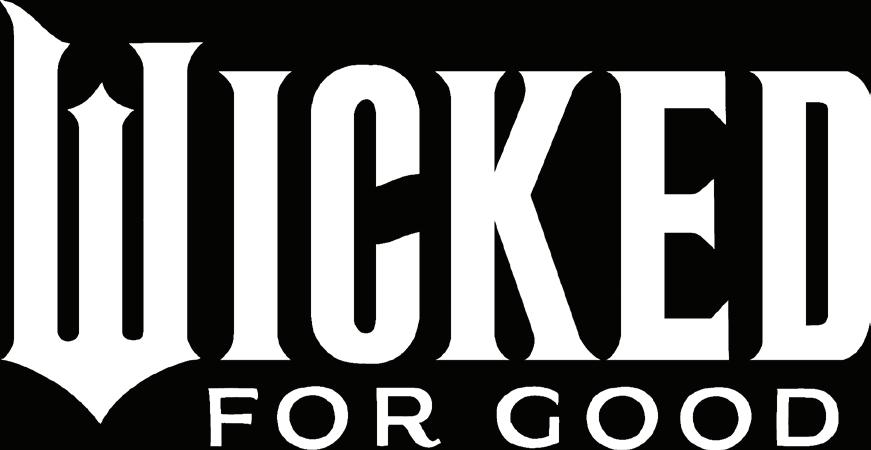
Keillor: I think I can make the case that luck is random. And everything really comes down to luck. My first radio show — I got the job because nobody else wanted to work the 6 a.m. shift. And when you work the 6 a.m. shift, you realize that your listeners are not interested in hearing about the problems of the world or your problems. They want to be amused and lifted up. It’s six in the morning in Minnesota. It’s January. It’s frigid outside, and snow is falling. You know what your job is, and you go to it.
— For tickets and more information, visit TheGrandWilmington.org







At the end of this month, the holiday concert Kategory 5 & Friends Present Holidaze Rock will light up the Baby Grand for the third year in a row. More than 20 area musicians will share the stage for this high-energy show, which sold out last year.
“It’s always an honor to share the stage with so many amazingly talented people playing a wonderful variety of rocking Holiday music,” says Kat Pigliacampi, lead vocalist for Kategory 5. “I really couldn’t do it at all without the help of Roger Hoilman, who is really instrumental in making this happen. I’m so grateful.”
Hoilman, who plays guitar and sings in the show, helps organize the rehearsals for the show at his Ponderosa Barn, a non-commercial, private performance space in West Grove, Pa.
The concert starts at 3pm on Sunday, November 30, with proceeds benefitting The Grand’s community engagement programs.
— More at TheGrandWilmington.org

In its 30th year, the folks at Dogfish Head are enhancing the brewery’s annual Analog-A-Go-Go event into a full-on Analog-A-Birthday, or as their website describe it, “one big, massive, birthday extravaganza to celebrate off-centered goodness since ’95!”
On Saturday, November 8, from 1-4pm, Dogfish’s Milton brewery will transform into a record fair meets beer fest. More than 18 samples of beer, spirits and cocktails will be available, and record stores from around the area will bring their best vinyl for sale.
Staff from the longtime magazine Relix will be on-hand to help brew an exclusive beer for the event appropriately called Pan-Am-Jam-Band.
— More at Dogfish.com
Atributeto the music of Paul Simon signals the start of the ninth season for The Rock Orchestra (TRO) at The Grand. On Saturday, November 15 guests can expect to hear selections ranging from the musician’s early work in the folk duo Simon & Garfunkel to his more recent material.
And, of course, there is his Grammy-winning album Graceland, which saw Simon explore the connections between American rock and blues with the deeper roots of African music.
“As a singer, this is dream material,” TRO’s co-founder Joe Trainor says of Simon’s music. “His melodies and timing are so inventive and beautifully constructed.
“For TRO, it’s territory we haven’t explored much, with new genres and new textures. But it’s a challenge we’ve had a blast tackling.”
— More at TheGrandWilmington.org




















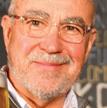
































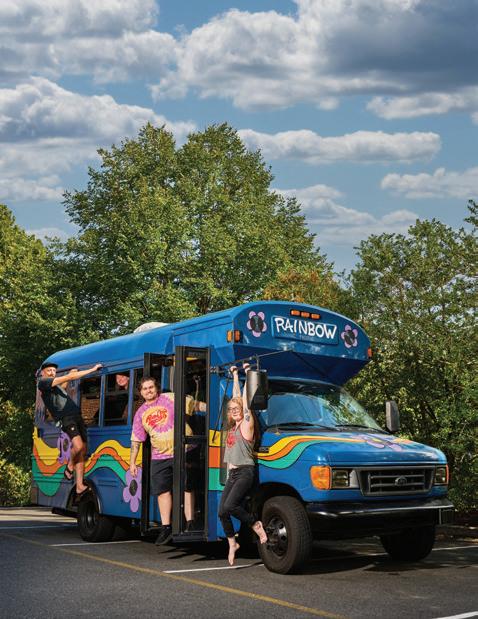






























With the help of DC Mac Wondo, Universal Funk Order (UFO) offers a plate full of funk and soul music on Wednesday, November 26 for the band’s annual Funksgiving show.

“For this to be our sixth Funksgiving at The Queen, it’s easily become the best night of the year for us,” says Reid Kelley, the band’s vocalist and trumpet player. “We’ve built this pre-holiday tradition that gives our fans something to look forward to and we hope to see more new faces this year!”
Mac Wondo will help set the stage for UFO, opening the night with a mix of classics and more contemporary hits. The DJ has made notable appearances more recently at The Quoin, Bardea, Wilma’s and the Philadelphia Art Museum.
—More at TheQueenWilmington.com

AGoFundMe page created on September 26 has already raised more than 90 percent of the funds requested in support of Mark Unruh. The musician and teacher had surgery at the end of September to help him in his years-long battle with gastrointestinal complications.
As the page described, Unruh’s career “spans 50 years of playing, 43 years of teaching, and a lifetime of still learning.”
On September 29, Unruh posted a personal note to the page saying, “I’m heading into surgery tomorrow and I just wanted to tell you how grateful I am for all of the donations … We have a wonderful community of musicians and lovers of music who all watch out for each other, and you have helped guide me through some difficult times.”
As of press time, $31,740 of the total $35,000 requested had been raised. If you are interested in helping bridge the funding gap, visit GoFundMe.com and search for the page titled “Help Support Mark Unruh.”

On Wednesday, October 8, Mayor John Carney and City officials hosted a grand opening ceremony for a reimagined Rodney Park The new and improved space will be dedicated to environmental education and community wellness, offering trails, views of the city, and more. A community garden is scheduled to open Spring 2026.
“This project has transformed a previously under-utilized space into an outdoor hub for education and community,” said Mayor John Carney. “This opening demonstrates the power of collaboration between the private sector, public sector, and members of the community, and I’d like to thank everyone who played a role in bringing this vision to life.”
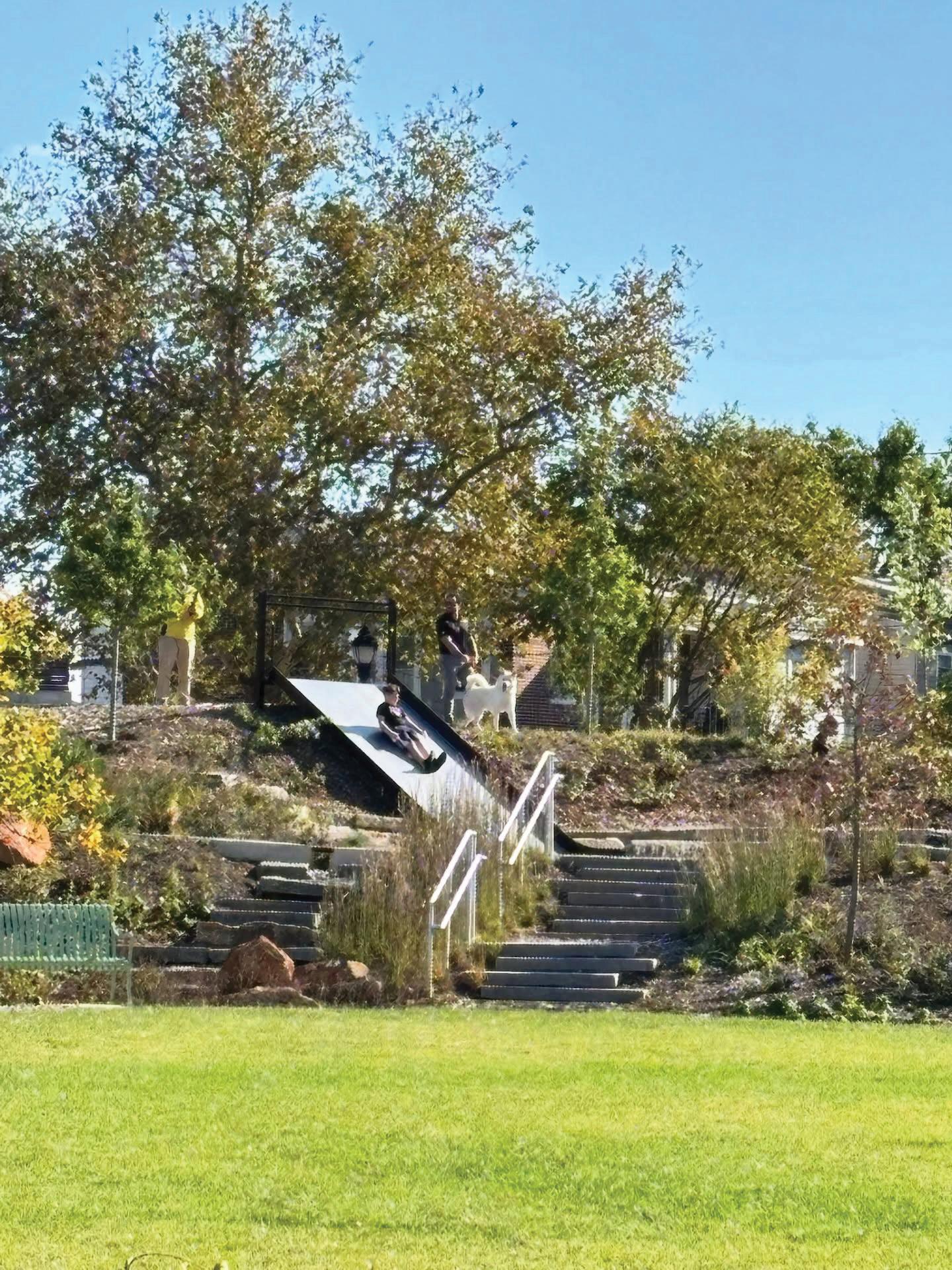
Located in the Hilltop neighborhood, the former Rodney Reservoir was a City-owned structure constructed in the 1900s. The reservoir consisted of a large covered concrete tank with earthen berms on four sides. Due to suboptimal hydraulic function, the former structure was removed from service more than twenty years ago.
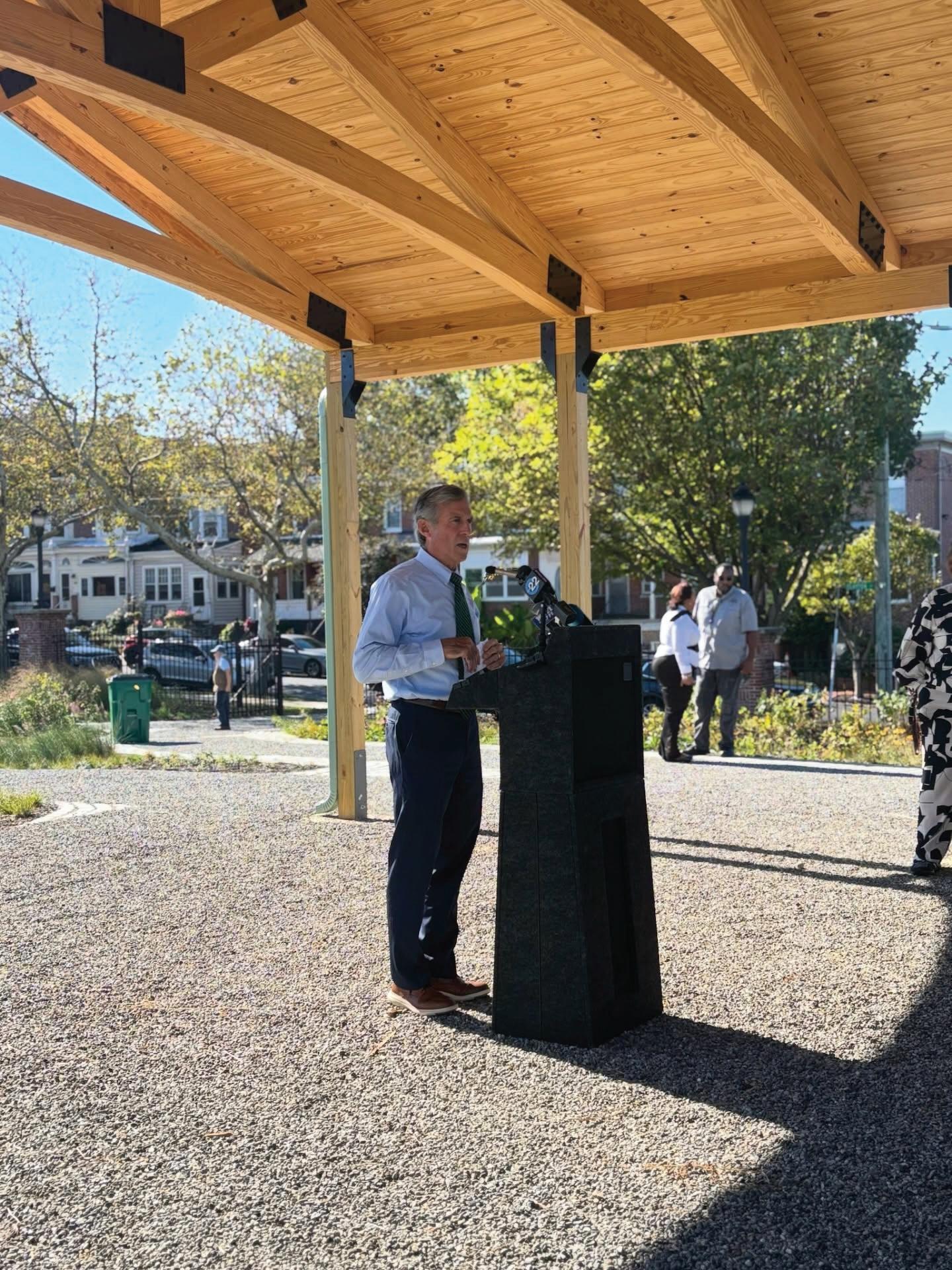
“This park is the beautiful creation of many hardworking City employees, many dedicated community leaders and elected officials, and many residents who love their neighborhood, who all worked together to create this new park for everyone to enjoy,” said Councilmember Christian Willauer.
In partnership with Green for the Greater Good and community advocates, this event marks the culmination of a project started under former Mayor Mike Purzycki with support from the City’s departments of Parks and Recreation and Public Works.
Concepts and designs were led by landscape architecture firm Hinge Collective. CHA Solutions led project management and construction, and Meliora led civil engineering work.

The City of Wilmington’s annual Leaf Collection Program is underway and will continue through December 19, 2025
Residents are encouraged to rake leaves to the curb or place them in brown paper bags on their scheduled pickup days. Throughout the season, Public Works crews will rotate through neighborhoods to ensure streets remain clean and safe.
Residents are reminded:
• Plastic bags will not be accepted.
• Keep leaf piles away from storm drains, utility poles, and parked vehicles.
Together, we can help keep Wilmington beautiful this fall. For the full collection schedule and additional details, visit the City’s website at WilmingtonDE.gov.
Wilmington City government offices will be closed on Nov. 27, 2025 , and Friday, Nov. 28, 2025 for Thanksgiving. As a result, the Department of Public Works’ Sanitation Division will collect trash on a modified holiday schedule:
• Monday, Nov. 24 : East of I-95 trash collection
• Tuesday, Nov. 25 : West of I-95 trash collection
• Wednesday, Nov. 26 : East of I-95 recyclables collection
• Thursday, Nov. 27 : CITY HOLIDAY/NO collection
• Friday, Nov. 28 : CITY HOLIDAY/NO collection
• Saturday, Nov. 29 : West of I-95 recyclables collection
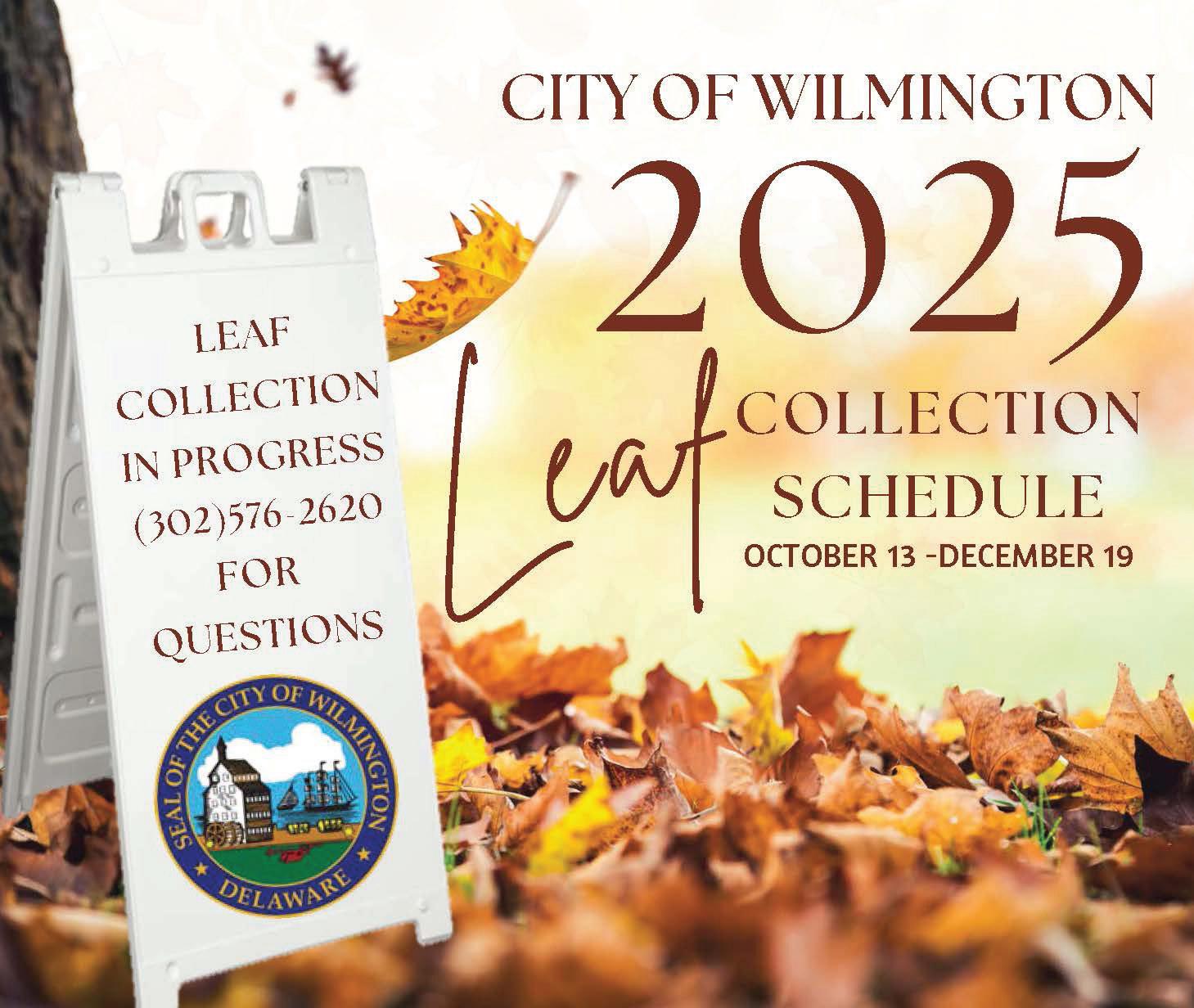
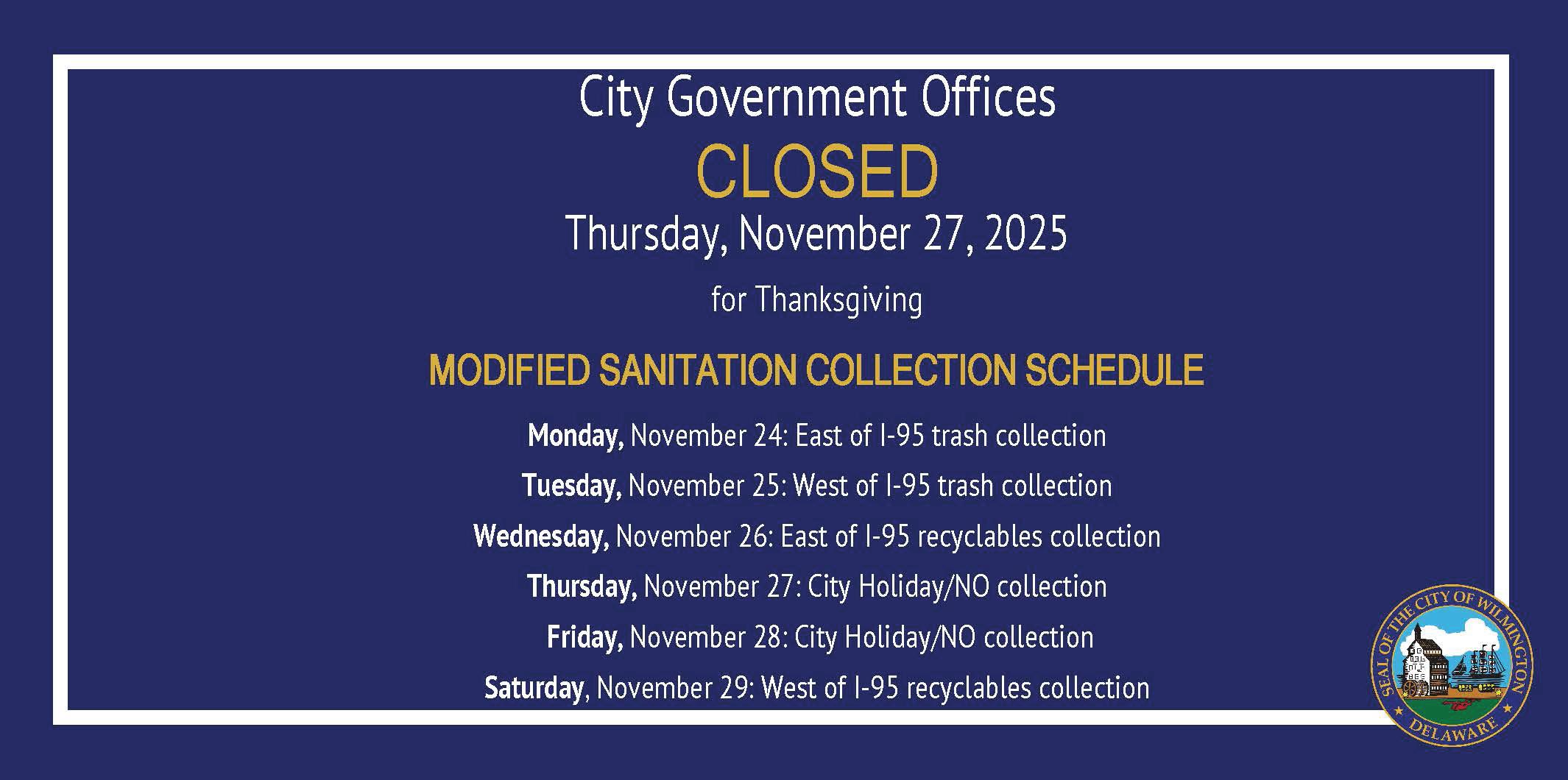
For more information about trash and recycling in the City, please visit our website at: WilmingtonDE.gov. To report issues about trash and recycling collection, please dial 3-1-1 or visit: WilmingtonDE.gov/311.






